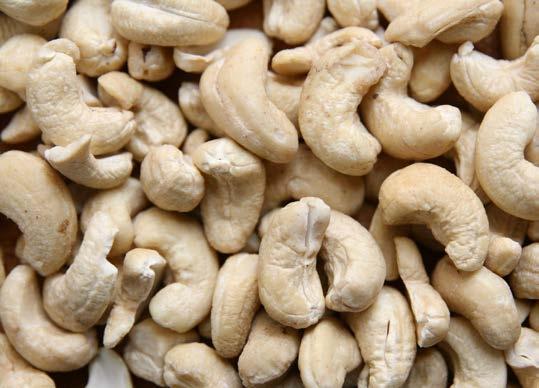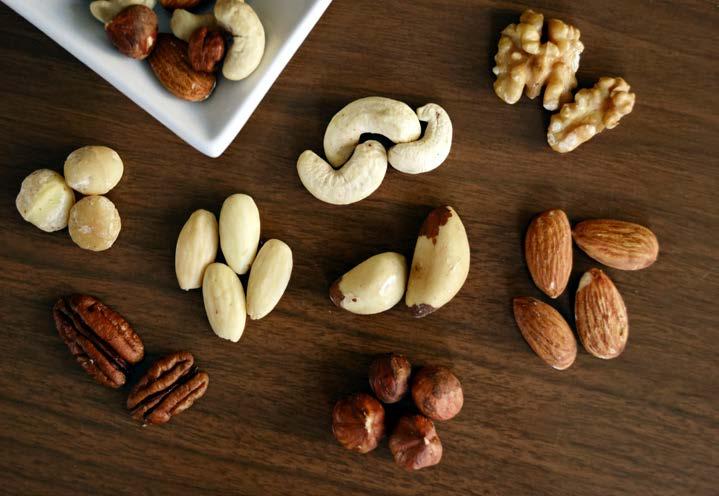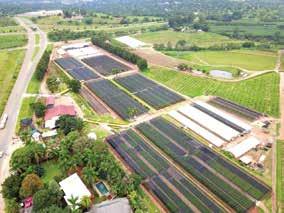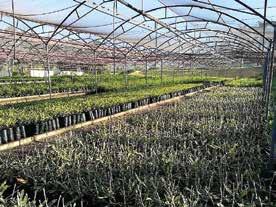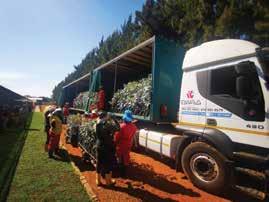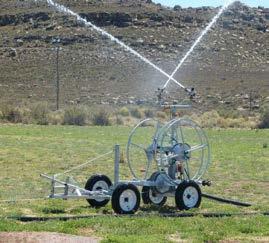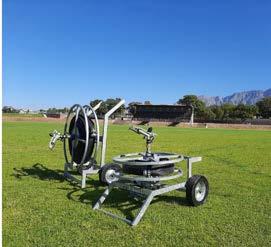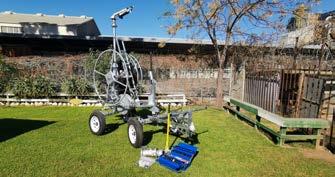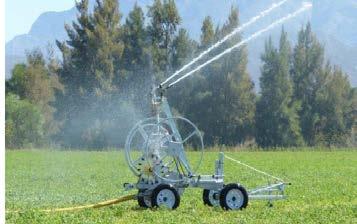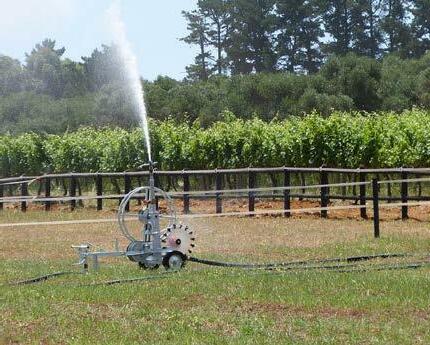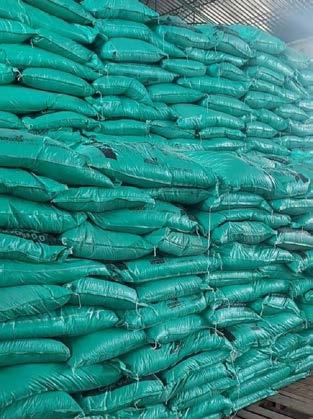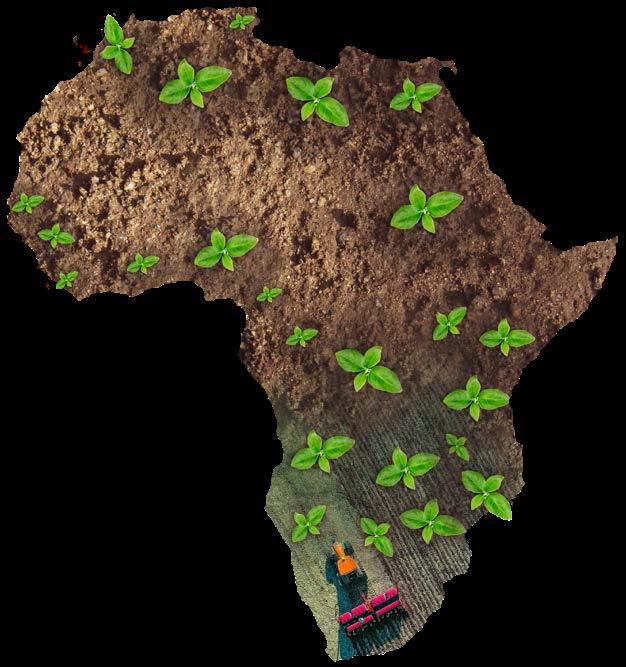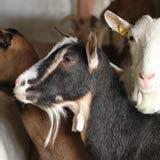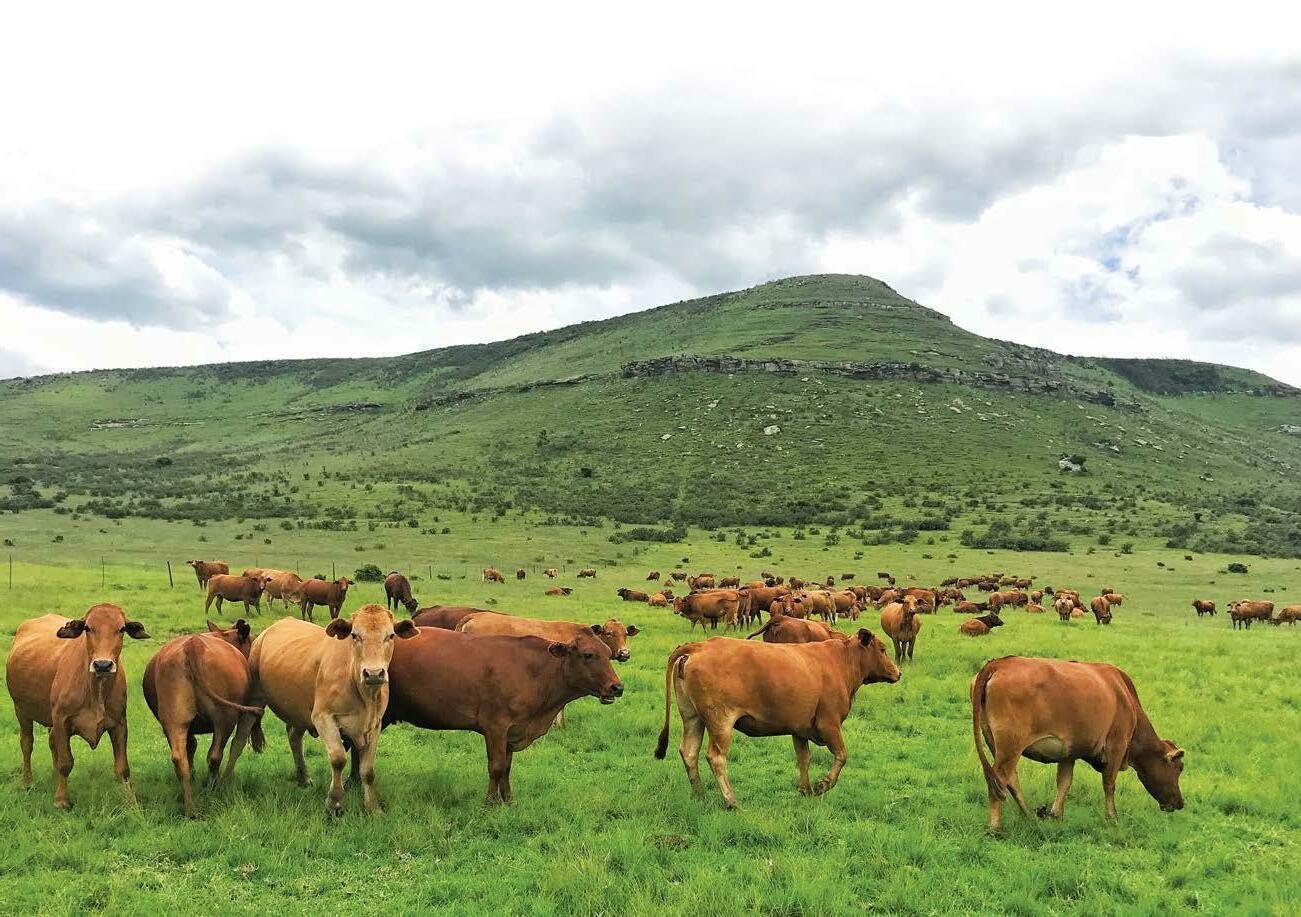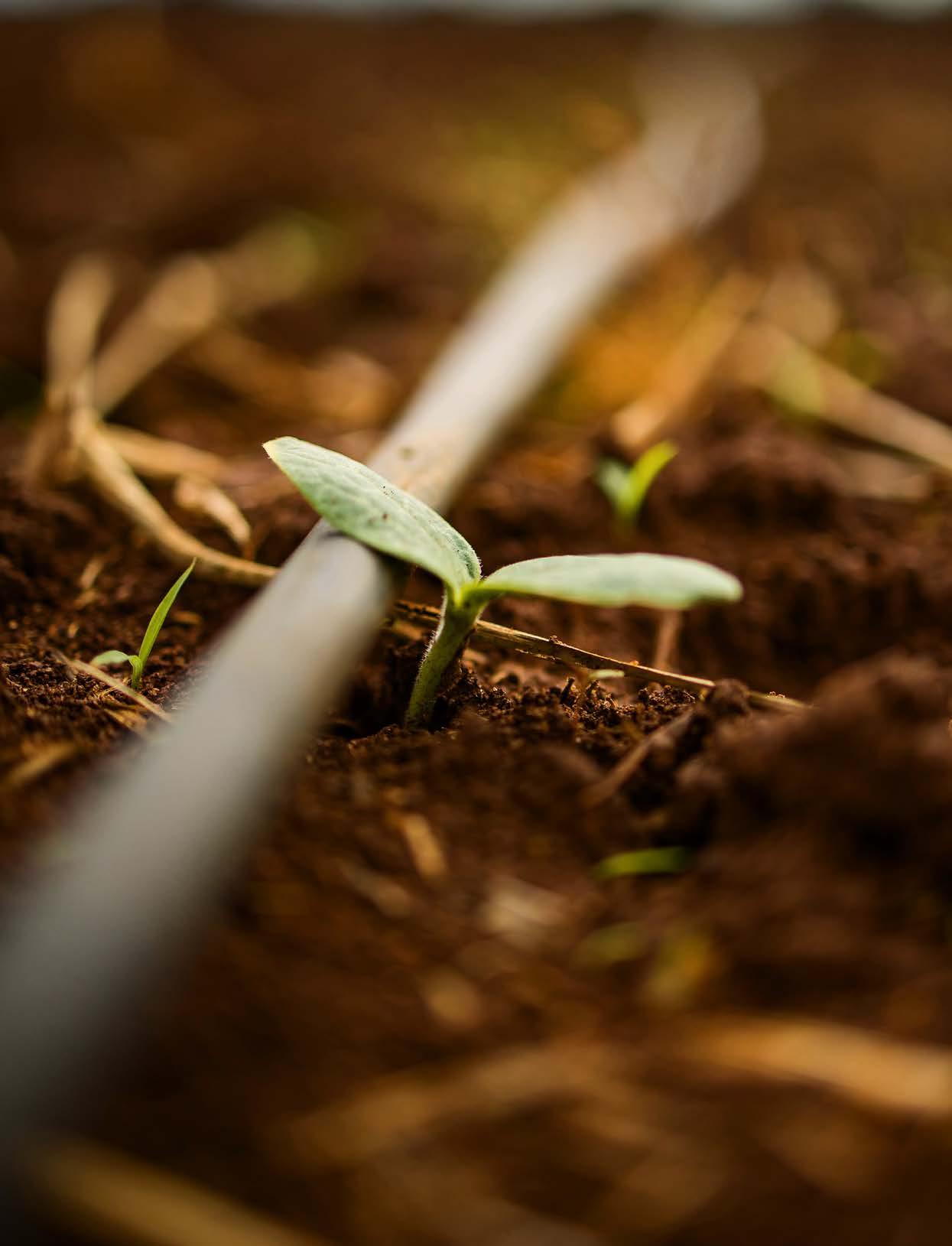













W
e are entering a new summer crop season for most parts of Southern Africa for 22/23.
According to a recent news release from Agbiz, the Northern Hemisphere has experienced extreme heat and drought these past few months, prompting us to wonder if the Southern Hemisphere could experience similar extremes in the upcoming 2022/23 summer season. We are in a La Niña cycle, which means the typical weather conditions would be higher rainfall for Southern Africa, and drought for East Africa and South America. Therefore, extreme weather events could mean excessive rains in Southern Africa, while other regions would remain dry.
Fortunately, to our knowledge, there are no clear signs pointing to yet an other season of dangerous rains, but this is a risk that cannot be ruled out. On that note, ProAgri wishes all farm ers success for the coming season!
Our farmers are stalwarts who tackle each new season every year with faith and hope, regardless of what nature and life throw their way. Farming requires perseverance and hard work, and a crop’s success depends on con tinuous attention, control, and correc tion throughout the entire process of planting and cultivating.
Some exciting news for citrus growers in Botswana:

The Citrus Growers’ Association of Southern Africa (CGA) recently an nounced that citrus growers in Botswa
na have become members of their organisation, joining over 1 400 members from South Africa, Eswati ni and Zimbabwe. With the addition of Botswana, the CGA now repre sents just over 1 564 citrus grow ers in Southern Africa. Read more on page 30 or online https://www. proagrimedia.com/news-events/ botswana-citrus-growers-join-thecitrus-growers-association-of-south ern-africa/.
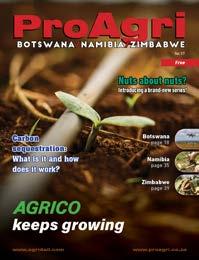

In this month’s edition of ProAgri BNZ 37, in our cover story you can read more about Agrico’s 120 years of service, and how they remain at the forefront of technology.
You can also read more about climate change and its impact on Sub-Saharan Africa.
Are you nuts about nuts? This month we also started with a brandnew series on tree nut production.
We remain committed to provide our readers with informative articles and agricultural related news, help ing farmers reduce downtime and maximize productivity.

Sign up for our monthly newslet ter, and make sure you visit our websites www.proagri.co.za , www.proagrimedia.com and www.agri4all.com for all your agricultural news and needs.
For more than 100 years, Agrico has been faithfully serving farmers all over the continent. Read more on page 3 how Agrico remains relevant and keeps growing.
Botswana / Namibia / Zimbabwe
577 Rossouw Street, Die Wilgers, Pretoria +27 (0)79 515 8708 www.proagri.co.za
Copyright © 2022. All rights reserved. No material, text or photographs may be reproduced, copied or in any other way transmitted without the written consent of the publisher. Opinions expressed are not necessarily those of the publisher or of the editor. We recognise all trademarks and logos as the sole property of their respective owners. ProAgri shall not be liable for any errors or for any actions in reliance thereon.
Editor Bianca Henning
Reporters
Benine Ackermann
Maryna Steyn
Natasha Kruger
Specialist Writer
Annemarie Bremner
+27 82-326-2572 bianca@proagri.co.za
+27 73-105-6938 benine@proagri.co.za
+27 82-261-9177 maryna@proagri.co.za +27 81-736-4236 natasha@proagri.co.za
+27 82-320-3642 annemarie@proagri.co.za
Client Relations Manager
Carin Swartz
Marketing Manager
Diane Grobler
Marketing Xander Pieterse
the

John Deere
Deeply
Trucks:
Series:
hidden benefits of strip grazing: Profit from

farming
Africa
african
Climate change and farming
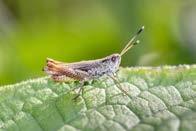

Botswana
Johan Swartz
Tiny Smith
Lynette van Tonder
Creative Director
Christiaan Joubert
Design Michelle Kruger
Enquiries
Engela Botha
+27 84-233-0123 carin@proagri.co.za
+27 82-555-6866 diane@proagri.co.za
+27 79-524-0934 xander@proagri.co.za +27 71-599-9417 johan@proagri.co.za +27 82-698-3353 tiny@proagri.co.za +27 74-694-4422 lynette@proagri.co.za
+27 72-419-3990 christiaan@proagri.co.za
+27 12-803-0782 engela@proagri.co.za
Distribution and subscription
Nita Volmer-van Zyl
Accounts
Ronel Schluter
Business Manager
George Grobler
+27 79-515-8708 nita@proagri.co.za
+27 12-803-0782 accounts@proagri.co.za

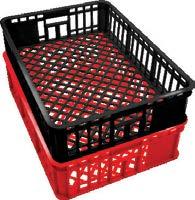
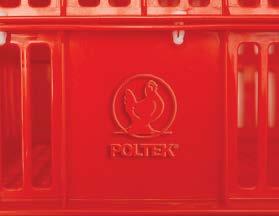


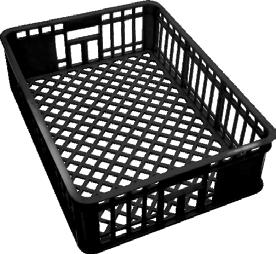

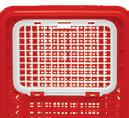


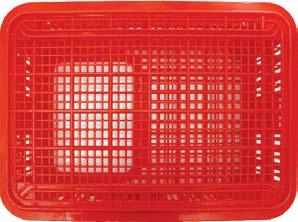

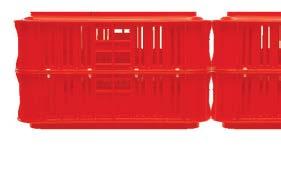


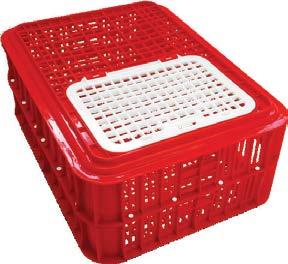

 by Tisha Steyn and Grethe Bestbier
by Tisha Steyn and Grethe Bestbier
W
hat is the secret to more than 120 years of service?
According to Johan Visser, drip- and micro-irrigation expert at Agrico, constant innovation and progress are fundamental to success. When serving a technologically developed irrigation market, one should not only be able to keep up, but you must always be one step ahead. That is how Agrico remains relevant. This is how Agrico grows.
From pivots to drip- and microirrigation, and everything in between Johan joined Agrico at the beginning of 2022. With 38 years’ experience in the irrigation industry, his mandate is to expand drip- and micro-irrigation expertise within Agrico, a name largely associated with pivots.
He says: "South Africa was one of the first countries to watch Israel tackle precision irrigation in the late sixties. South Africa is also a waterpoor country, so we also had to learn drip- and micro-irrigation techniques."
To compare drip- and micro-irriga tion to pivot irrigation is to compare apples with onions. According to Johan, the two methods are not in competition with each other at all. Each method has a specific application.
"The choice of system is based on the farmer’s needs," he explains. "With good planning and management of the systems, both are water-efficient methods of irrigation."
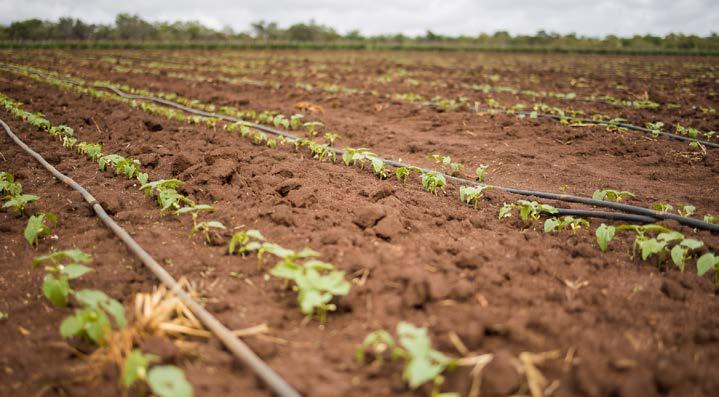
Establishing the application of dripand micro-irrigation within Agrico requires a plan of action. This includes further training of Agrico's designers and experts, as well as expanding the Agrico footprint across the country. In this way, every farmer can be assured that there is an Agrico expert nearby to provide the necessary support.
One step ahead of the rest: how to stay at the forefront of technological development
The South African irrigation market's de velopment over the decades is striking. The 21st century has shown the face of modern solutions and software such as Agrico Web Control, which allows a farm
er to control his entire irrigation system from his or her mobile phone. We live in a technological age, and that means swim or sink for irrigation suppliers.
“Many farmers, especially the younger ones, prefer high-tech sys tems. Agriculture is very dynamic, and the wheel of preferred products is con stantly spinning. That is why Agrico is working hard to remain at the forefront of technology," says Johan.
"South African farmers are among the best in the world. They produce under harsh conditions. Commercial farmers receive minimal or no support from the state, input costs are high, the roads are in appalling condition, and water is limited."
Fortunately, the expression, a farmer makes a plan, is still as appropriate to day as before. Farmers learned to face the challenges by farming more effec tively, economically, and scientifically.
Irrigation is no longer simply watering your crops; it is a transfer system that transports water, fertilisers and chemical or biological components to the crops.
The management of water is a pre requisite for success. An irrigation sup plier should know how to determine the farmer’s and farm's needs. Our farmers are well-informed, and it is the duty of the irrigation industry to ensure that we provide them with an economically workable system," says Johan.
"Agrico is a world leader in irriga tion. We aim to be the best irrigation company in the Southern Hemisphere," says Johan.
Therefore, growth and expansion are of utmost importance. It is criti cal to move, literally and figuratively, as close as possible to the farmer. By being present in a farmer’s area and demonstrating absolute expertise on all irrigation methods, the farmer can be assured that he or she is getting the optimal solution.
"Agrico wants stay in touch with the farmer all the time. Our role is to be the bridge between farmers and the importers and manufacturers of irriga tion equipment."
Therefore, a salesperson should first of all determine who the customers are.
Thereafter, a solution should be proposed that the farmer is comfort able with, so that he can get the most out of it.
This is how Agrico offers efficient, economically feasible and sustainable irrigation solutions.
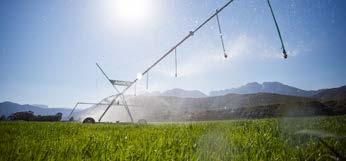
“Agriculture requires the farmer to be in charge of all aspects of his farm in his own way, with our help."
While Agrico sells products with repu table brand names such as Netafim, Agri plas and Azud, they also manufacture at least half of the equipment they offer inhouse. The factories in Bellville and Lichtenburg currently support 39 branches across South Africa and Zambia.
More than 70 marketers serve farm ers in Zimbabwe, Namibia, Botswana, Mozambique and Angola, as well as Nigeria and Ghana. A team of about 40 young engineers develops products and provides technical support.
"We employ young men and give them opportunities. With our existing experience and their innovative, pas sionate energy, we tackle agricultural challenges head on."
For more information on how Ag rico can assist you with the latest and greatest irrigation technol ogy, contact sales@agrico.co.za or call +27-83-455 5423. You can also visit Agrico's website at www.agrico.co.za.


Article supplied
A FGRI Equipment has been Bot swana’s proud John Deere Dealer since 2016. Brand new premises and additional appointed product experts who love working with farmers, along with premium equipment, have added more value to farming operations in the country.
In the spirit of Botswana's Independence Day on the 30th of September, our AFGRI Equipment Botswana team is still running an Independence Month Special on the John Deere 5075E MFWD, 5075E TWD, 5065E TWD, and 5045D TWD.
The 5075E 4WD tractor is available in 55,9 kW (75 Hp) rating. This tractor is designed for heavy-duty applications while giving the operator comfortability and overall, next-generation tractor technology.
The John Deere 5075E offers the following: 4-wheel drive, Smart brakes, 9F/3R or 12F/12R PowrReverser™ transmission
It is also available in a two-wheel drive. This special is available from P274 999 for the MFWD and the TWD is available from P238 999 until the end of October and while stocks last.
The 5065 E tractor has the comfort and convenience features to keep you smiling even during the longest days; the engine power and hydraulic capacity to take on hard-to-handle chores; and the quality of engineering, assembly, and components you expect from John Deere.
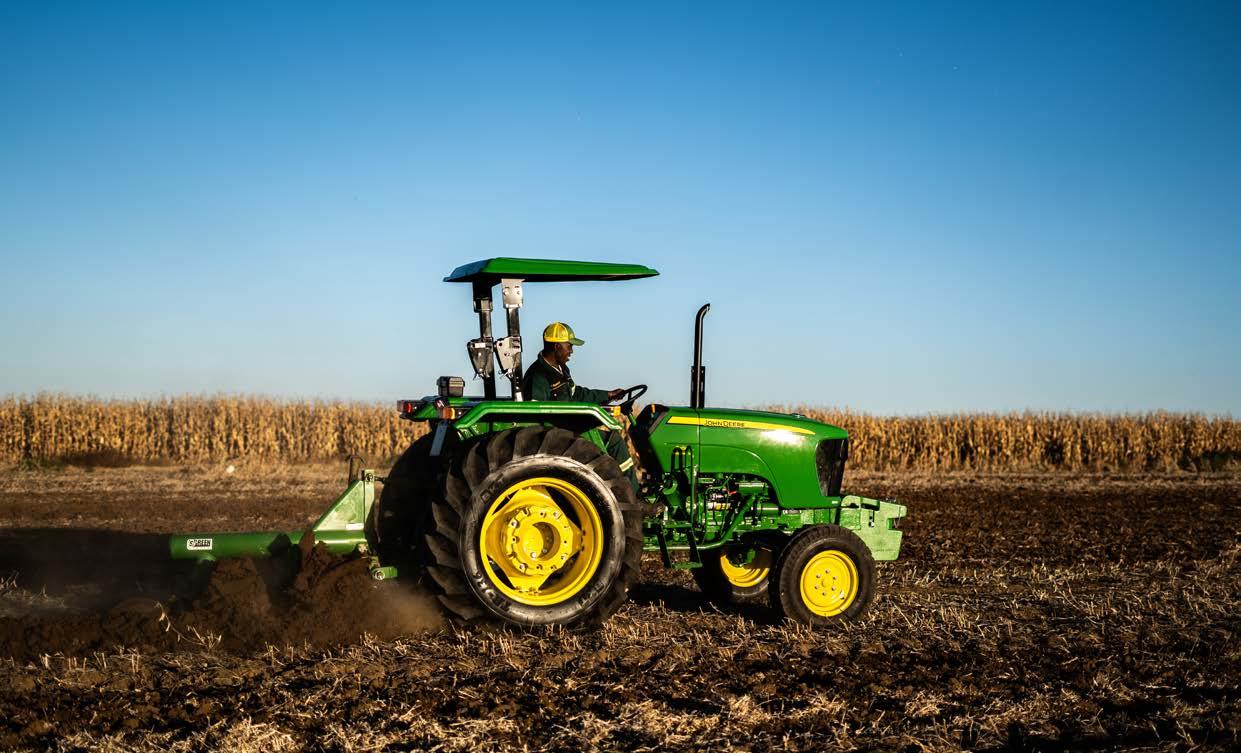
The John Deere 5065E offers:
Engine: 48,5 kW (65 Hp), 2 400 rpm, 3 cylinders, Rotary FIP, cool ant cooled with overflow reservoir, turbocharged
Air filter: Dry-type, dual element Transmission: 9 forward and 3 re verse speed, collarshift gearbox Hydraulics: Lifting capacity 1 800 kg at lower link ends
The John Deere 5065E TWD is available from P221 999 until the end of October and while stocks last.
The John Deere 5045D TWD
Made for high-hour users who de mand all-day comfort and the ultimate level of performance - the John Deere 5045D tractor is the best choice.
The John Deere 5045D TWD offers the following:
33,5 kW (45 Hp) at 2 100 rated ERPM
Power steering
Oil immersed disc brakes
Dry type air filter
Oil jet for piston cooling
Top shaft lubrication
Piston jet cooling
The John Deere 5045D TWD is avail able from P184 999 until the end of October and while stocks last.
Get in touch:
Visit John Deere’s AFGRI Equip ment Botswana branch: 43163
Maphapheng Rd, Gaborone, Botswana or contact their sales agents, Zein: (+267)73-2033033 or Muzila: (+267)75806-6010. To contact the AFGRI Equipment Branch, phone (+267)311-0876. For more information, visit their website at www.afgriequipment.co.za
Prices are valid until the 31st of October 2022 and while stocks last. Terms and conditions apply.
Where this blue team operated, the field is ready for planting.
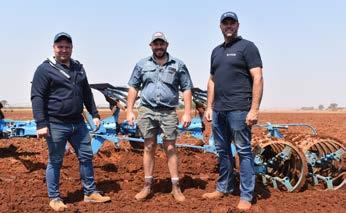
The LEMKEN Juwel 8 in ac tion with the furrow press roller ensuring an even and perfect seedbed afterwards.
L
EMKEN is well known for their mul tipurpose equipment such as the Karat, Rubin and Heliodor, assuring you a firm seedbed for the planting season. When ploughing needs to be done, LEMKEN also stands ready with its Juwel range.

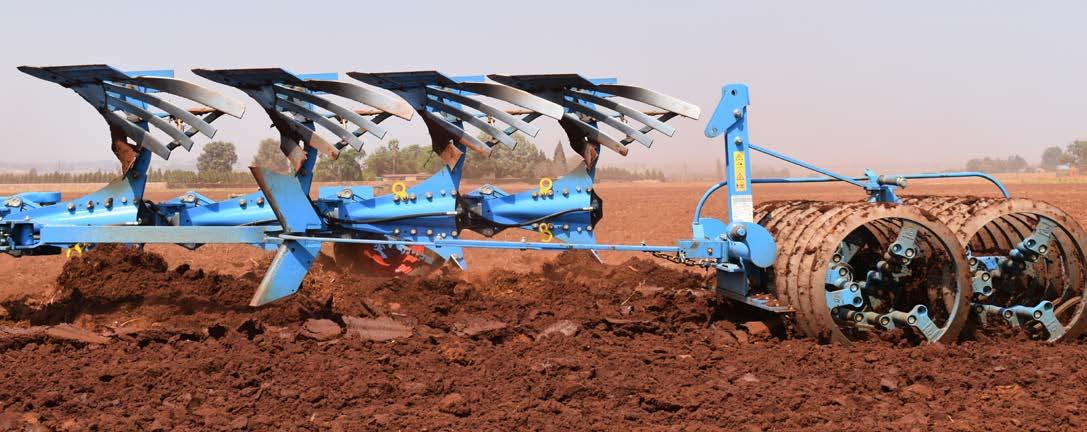
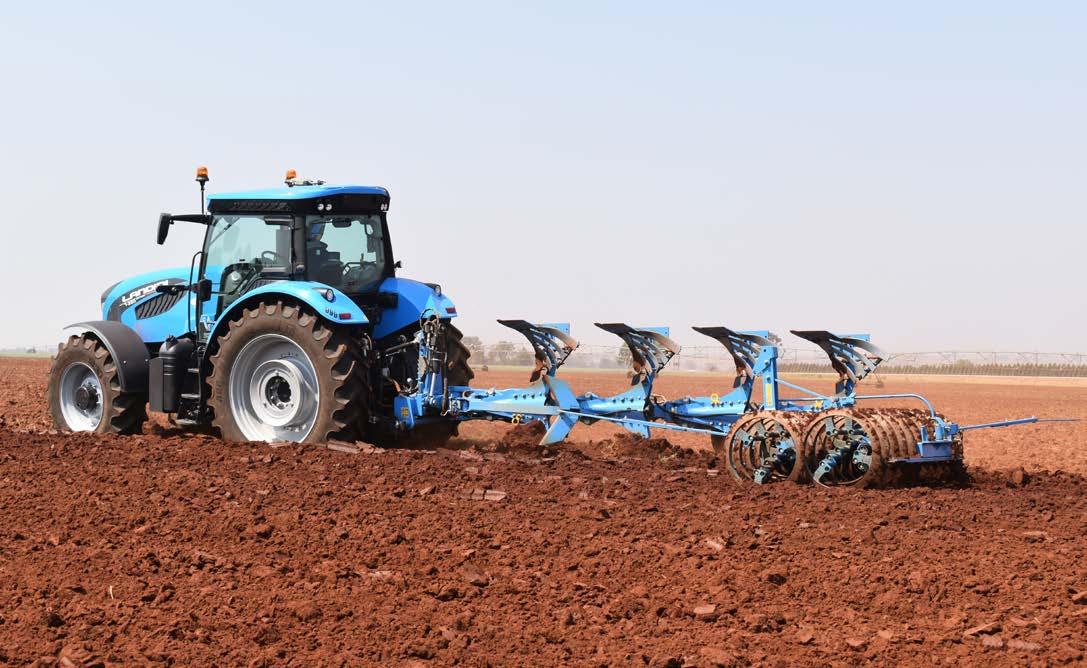
Greenway Farms originated 34 years ago – in 1988. They are located in the Tarlton area, and also have properties in Christiana and Naboomspruit. The main crop produced by Greenway Farms is carrots (800 ha) and cash crops which include wheat (350 ha), sugar beans (300 ha) and soya beans (300 ha).
Greenway Farms is a family farm
owned by two families, under the man agement of Vincent Sequeira and Vito Rugani.
"I grew up on the farm and have always had a love and passion for what we do. Since I was five years old, I have helped out on weekends and holidays on the farm wherever I could. For the past four years, I have been on the farm full-time, where I started as General Farm Manager for the Tarlton farm, and after two-and-a-half years I was appointed as Senior Production Manager, where I am now responsi ble for the management of all three farms," says Vincent Sequeira junior.
Nowhere in the world is a set of equipment that can compare to LEM KEN. This is also precisely why Green way Farms chose LEMKEN. They have been using LEMKEN equipment for the past three-and-a-half years.

They have four LEMKEN implements on the farm, including two 3,5 metre Karat 9s, a 5 metre Rubin 12, and they recently acquired the LEMKEN Juwel 8 plough.
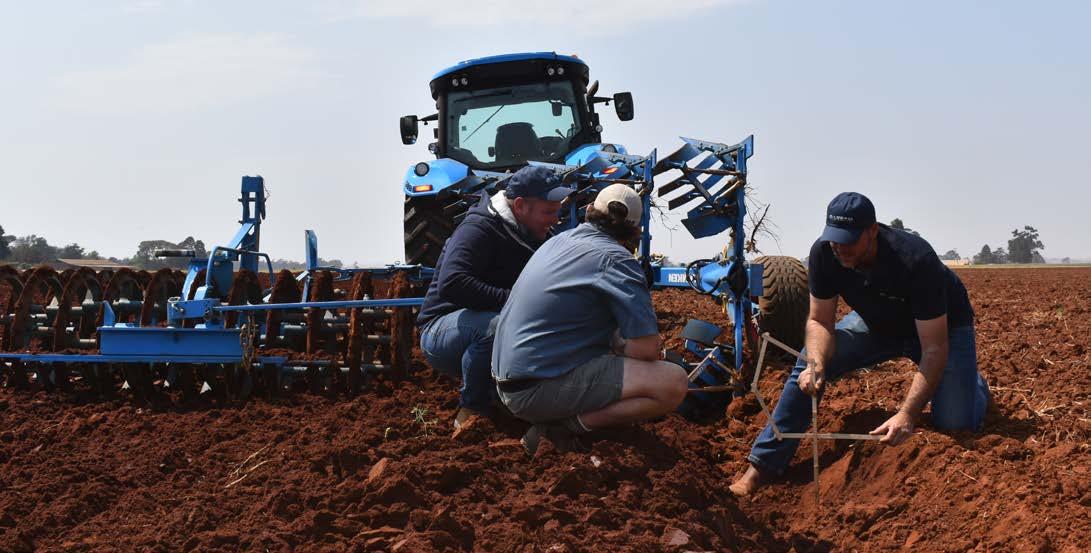
"Over the past five years, farmers all over the country have made a mental shift, and increasingly realised the importance of good soil structure. Our need on the farm was to improve our soil structure and soil moisture," says Vincent.
Marco Tijssen, Co-Director of Genius Landbou and LEMKEN Sales Repre sentative for the Tarlton area, confirms that LEMKEN was the best solution to improve the soil structure of Greenway Farms.
"They were looking for a reliable implement, and parts that are easily available. I recommended the LEM KEN Juwel 8 plough together with the furrow press roller, which is ideal for reconsolidating soil and provides farm ers with the best results," he says.
The LEMKEN Juwel 8 is a mounted plough attached to the three-point hitch of the tractor. The furrow press roller is pulled behind the plough. At the end of the field, the furrow press roller is unhitched, whereafter the plough is hydraulically turned around in the air, to plough the next section of the field.
“After I did some thorough research, Marco recommended the Juwel 8 to me,” says Vincent. "I had seven re quirements: durability, a user-friendly
machine, low maintenance cost, good working depth, safe and quick hydrau lic overturn, availability of parts, and lastly a method of tillage that breaks the clods and creates a level soil sur face. The Juwel 8 met all my require ments, which made my choice easier.”
Good soil structure is of utmost importance to allow water and air to move freely through the soil, ensuring healthy plant growth.
Vincent adds: "Because carrots are a root crop, our soil structure is extremely important to ensure that we produce the best quality carrots, and also reduce diseases of the crop by ensuring you have the best possible drainage in your field.
“Over the years we have always ploughed our fields, although we always had to do extra tilling for the seedbed preparation. With the Juwel furrow press roller attached, it is a two-in-one operation. We save on fuel, labour, wear and tear, and an addi tional tractor and implement. With all these factors considered, we are more efficient in what we do.
"One of my favourite and unique features of the Juwel 8 is the Optiquick adjustment system. The Optiquick adjustment system allows for easy and efficient adjustment of front width and tractor or plough pull line, independent of each other. This precise and specific adjustment has brought us great im provements in our fuel consumption. The tractor pulls the plough with less effort, resulting in improved efficiency and cost savings.
“The LEMKEN Juwel 8 plough has a ploughing depth of anything up to 350 mm and a working width of up to 50 cm
per mouldboard. The plough needs a tractor power ranging from 80 to 150 kW depending on the number of furrows.
The furrow press roller is acquired apart from the plough. It is attached to the plough using a hydraulic pin. When the plough reaches the end of the field, the pin releases the roller, whereafter the plough turns over. It then re-engages the roller to work the next row," Marco explains.
Vincent adds: "We use a 130 kW tractor to plough. Our Juwel has al ready worked 400 ha, and now we only had to replace some of the shares for the first time."
Marco says: "Several farmers return to ploughing because it is a tillage method that offers the most for the farmer. You have a better soil struc ture, and better weed and pest control on your fields, which ultimately results in a better crop and harvest."
"All LEMKEN's implements are reli able and built to last. With LEMKEN, you get 100% value for your money, and you're assured to get what you need and more," Vincent concludes.
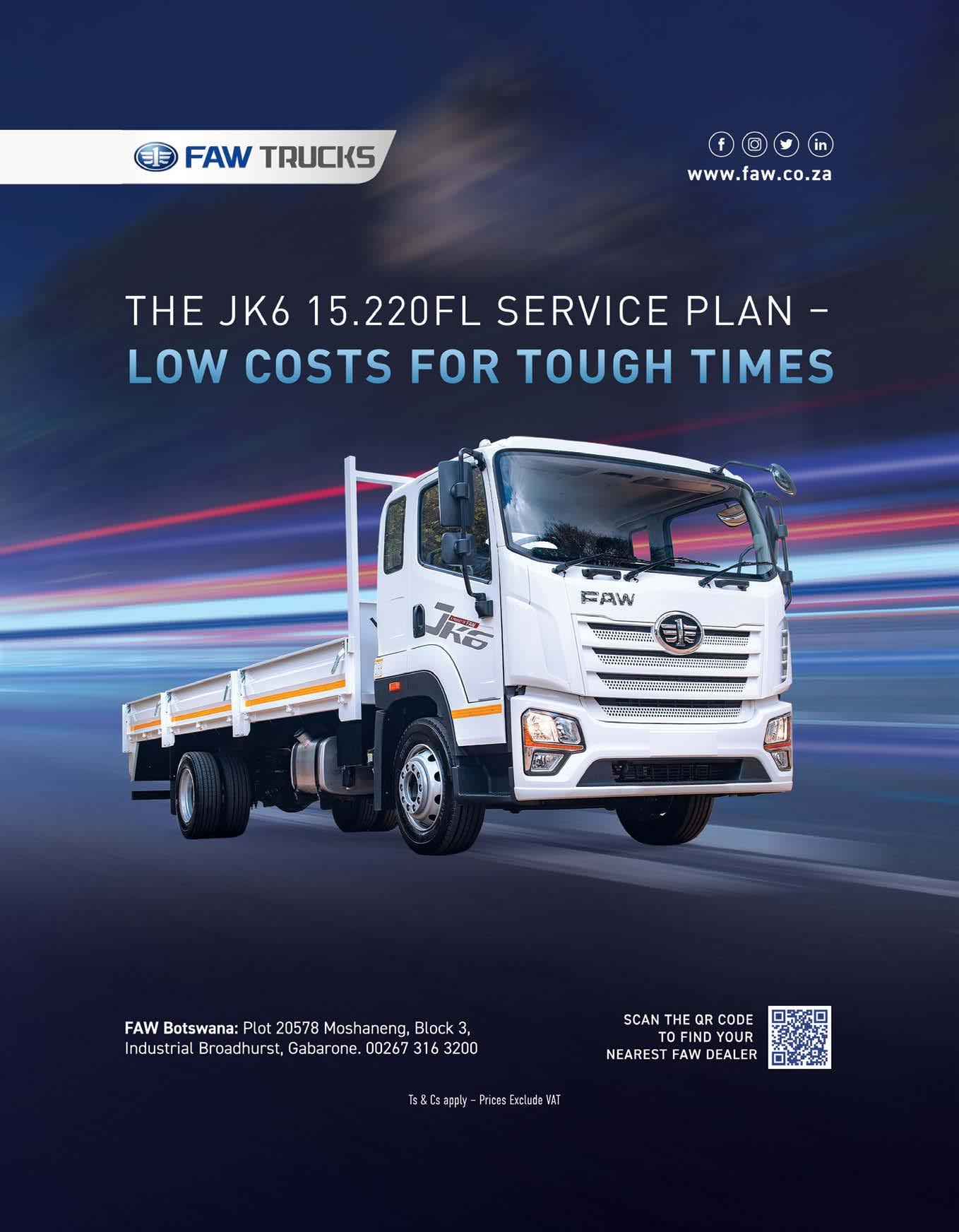
FAW Trucks prides itself on pay ing attention to what its customers require. “FAW SA is committed to offer ing vehicles engineered, developed and rigorously tested to meet the harsh operating conditions of Africa,” says Yongjun Li, CEO of FAW Trucks SA.

The company has embarked on a structured launch programme in recent months with the most recent being the introduction of the JH6 33.420FT, the younger brother of the JH6 28.500FT.
The JH6 33.420FT was launched re cently to local and export markets with many clients and prospective clients attending the event.
The newly designed and engineered JH6 33.420FT has a high-roof forward tilt cab with seating for the driver and a passen ger. It includes a double sleeper cab with air-conditioning, a radio with USB and an air suspension seat for the driver with multi-dimensional adjustment ability. This completely new cab design has a wind resistance factor of 0,54.
The new and improved look of the interior layout includes a multi-function steering wheel and enhanced dashboard features for better driver control along with central locking and power windows.
The 11 040 cc Euro 2 specification sixcylinder inline engine is water-cooled, turbo-charged and has an intercooler, producing 312 kW at 1 900 r/min and 1 900 Nm of torque from 1 200 r/min.
The Bosch manual injection pump is made specifically for African applica tions, while the gear shifting booster makes driving feel like handling a car, removing much of the stress, espe cially on long-haul journeys.
American brand Con-Met wheel hubs
are fitted, allowing 500 000 km of maintenance-free driving.
The 12-speed manual synchromesh gearbox is matched to a set of ratios specifically designed to provide opti mum performance and fuel efficiency, irrespective of whether it is operating in rural areas or on the open road.
It features a forged steel I-Section beam front axle coupled to a full float ing single reduction rear axle with inter-axle, inter-wheel, and differential locks. Semi-elliptical leaf springs with double-acting shock absorbers com prise the front suspension, while the rear has semi-elliptical leaf springs with auxiliary springs.
Stopping power comes from the dual circuit, full air brakes with ABS.
“All the products we introduce locally are carefully considered with African roads and driving in mind,” explains Li.
“This goes hand-in-hand with ensur ing those products will provide the best possible total cost of ownership experience for the operator through the entire life cycle of the truck.”
The JH6 28.500FT is the largest of the truck tractors from FAW Trucks South Africa and has consistently proven that, when it comes to long-hauling, it is virtually unbeatable.

“In our experience, customers in this segment of the market seek truck trac tors that are functional and reliable, but also affordable to run and main tain. In addition, they need to offer comfortable and well-equipped cab ins, must be easy to operate, provide adequate performance to get the job done and be fuel efficient,” says Li.
“The JH6 28.500FT ticks all these
boxes and more, and this translates into increased profits for their owners.”
It is fitted with the manufacturer’s renowned 6DM3 13-litre six-cylinder common-rail turbo-charged and inter cooled diesel powerplant. This engine develops 370 kW of power at 1 800 r/ min and 2 300 Nm of peak torque at 1 400 r/min. It has two fuel tanks of 450 litres each.
Mated to the never-say-die engine of the JH6 28.500FT is a ZF 12-speed TraXon AMT transmission, with parabol ic spring suspension front and rear to address vehicle weight requirements.
A full air dual circuit WABCO brak ing system with ABS enhances the JH6 28.500FT safety features.
Befitting its long-hauler status, much focus was placed on ensuring that the cabin of the JH6 28.500FT is as com fortable as possible for the driver and passenger. To this end, it features a full floating extended-roof sleeper cab with an innovative flat floor, which optimises interior space. Standard features such as air-conditioning, a radio with a USB port, and suspension seating eliminate unnecessary driver fatigue.
“The versatility and practicality of the JH6 28.500FT are two of its main selling points and as a result, some of our clients utilise it for very interesting purposes,” explains Li.
“The reason for our continued growth and success in South Africa is that we cater for virtually every need,” explains Li. “With a host of different engine ca pacities, payload allowances and body options on offer, businesses big and small can rely on our products to get the job done.”
“At FAW Trucks customer service is, and always will be, key. We go the extra mile to look after our customers and to make sure that we offer them the best deals possible,” explains Paul Lastrucci, National Aftersales Manager. “When our trucks leave the showroom floor after a sale, clients can expect long-term, dedicated services and 24/7 support, ensuring their investment gives them the returns expected of modern trucks.”
All FAW Trucks products are covered by a comprehensive warranty at indus try standards, ensuring that customers have complete peace of mind.
FAW Trucks has a large parts ware house at its premises in Spartan, from where it supplies the main regions in the country. In addition, service dealers are fully equipped, with highly trained technicians on hand for com plete servicing and repairs required.
65 YEARS IS ABOUT APPRECIATING ONE DAY, ONE CLIENT, ONE COMPONENT, ONE TEAM MEMBER AND ONE VISION.
65 YEARS IS ABOUT APPRECIATING ONE DAY, ONE CLIENT, ONE COMPONENT, ONE TEAM MEMBER AND ONE VISION.
Our range includes:
Our range includes:

Bearings
Bearings
Housings Gearboxes Slew Rings Bushes Clutches
Housings Gearboxes Slew Rings Bushes Clutches
Couplings Chain & Sprockets
Lubricants
Couplings Chain & Sprockets
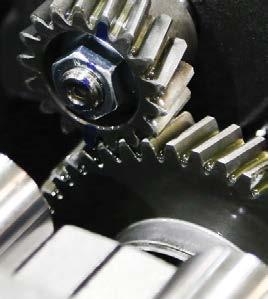
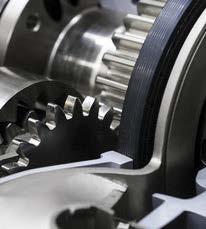
Belts & Pulleys
Belts & Pulleys
Agricultural Products Electric Motors
Agricultural Products Electric Motors
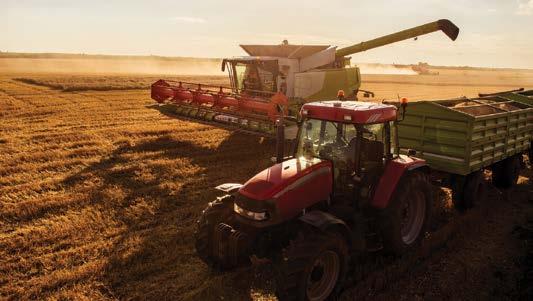



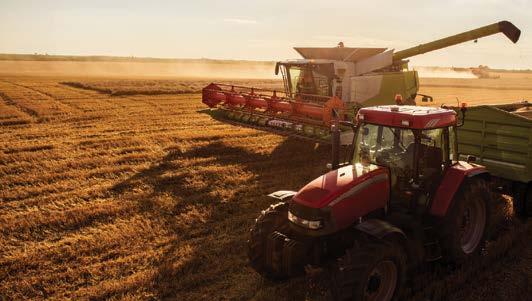

Variable Speed Drives (VSD’s)
Variable Speed Drives (VSD’s)
Lubricants
Adhesives and Sealants
Adhesives and Sealants


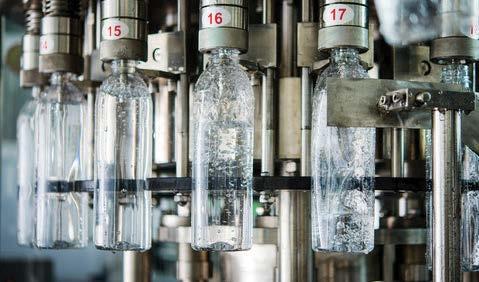
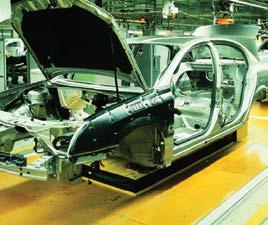
Power and Hand Tools
Power and Hand Tools Cleaners & Degreasers
Fasteners
Cleaners & Degreasers
Fasteners
More...
More...
You can trust BI to provide the bearings and power transmission solutions you need efficiently and cost-effectively. We partner with you every step of the way. Our specialist teams are ready to take your call.
You can trust BI to provide the bearings and power transmission solutions you need efficiently and cost-effectively. We partner with you every step of the way. Our specialist teams are ready to take your call.
YEARS 65
SERVICE
VISIT US AT
2022
VISIT US AT
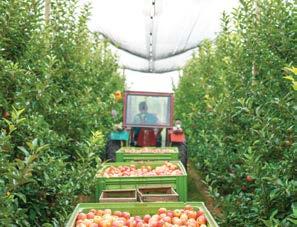
2022
HALL 45,46
NAMPO HALL 45,46
Avital aspect in keeping the wheels and cogs of the farming industry running smoothly, is bearings. A faulty bearing can cause farming operations to grind to a halt, but fortunately, Bearings International is always ready to promptly supply farmers with the means to keep the wheels of their farming operations running.
Bearings International forms part of Hudaco Industries, an industry leader in distributing bearings and power transmission products throughout Southern Africa. With their customer focused approach, they are committed to delivering value and offering quality solutions that make a real difference in farmers’ daily operations.
“BI has a distribution network of more than 40+ branches in many loca tions and have been servicing these areas for more than 64 years,” says Johann Streicher, Area Business Unit Leader at Bearings International.
“At BI, agriculture has been part of our core business since the very begin ning. Assisting farmers is a rewarding experience because we understand that we are a part of the process of bringing food from the field to the fork,” he adds. “Farms are LIFE. The pandemic affected most businesses as everyone went into lockdown, but farmers continued to work, ensuring we had food on our tables. That’s why serving them is our privilege.”
Over the last year, Bearings In ternational has grown considerably despite the pandemic. “We are actively increasing our market share in most in dustrial and agricultural segments, and we constantly improve on our offering,” Johann says.
BI assists the farmer with most ag ricultural requirements, such as:
• Bearings,
• Drives,
• Motors,
• Gearboxes,
• Couplings,
• Chains,
• Sprockets,

• Belts and pulleys,
• Seals,
• Lubricants and tools,
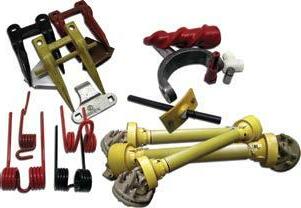
• et cetera
“If a farmer needs an item that we don’t stock, we’ll find it! Thanks to our 32+ sister companies in the Hudaco Group and our global supply network, we can fulfil special orders and re quirements,” he adds. “We make use of world-class brands and manufactur ers. These partners and products go through extensive testing and quality control processes to ensure we supply value that our customer can trust.”
The products distributed by BI are used in a variety of machines, such as combine harvesters, tractors, planters, and grain trucks to name a few. Bearings International also supplies products to the entire production chain that a farmer may have. Machines that use electrical motors, like tobacco driers or conveyors, for instance, can easily be maintained with the products supplied by BI. In this way, they provide a complete and effec tive solution to their customers.
“BI has high-quality products and some products were designed for critical applications. For example, if a farmer needs heavy-duty seals or ready-to-go bearing hub units for seed and ferti liser coulters, Bearing International has
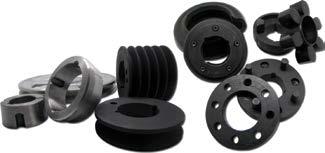 by Maryna Steyn
by Maryna Steyn
these specialised products — even for bakkies!” he adds.
The wide range of standard and specialised products that BI stocks can be used for the following industries:
• Implement manufacturers
• Milling
• Beef and poultry farms
• Irrigation and crop production
• Fruit and vegetable farming
• Fishing
• Tobacco
• Packhouses
“Our agri-product development leader ensures we carry the right stock at the right time, as the season demands. We provide this service 24/7, because we understand that increased pro ductivity and efficiency at a competi tive price is what our farmers need,” Johann explained.
Product and market knowledge is vital, that is why Bearing International ensures their staff is continuously trained on existing and new product of ferings. Their extensive sales network can provide solutions and services on the farm, saving farmers time and fuel costs. “We understand the critical role a farmer in Southern Africa has in providing food security and fuelling the economy; that’s why BI aims to sup port them in every possible way.
“We strive to continuously improve and maintain our high-quality delivery, but to be able to do so, we need good communication and feedback from the agricultural industry. BI welcome's all feedback so we can ensure we provide a dynamic and cost-effective solution that improves the farmer’s daily tasks,” Johann concluded.
more information, contact BI
may also
an
at
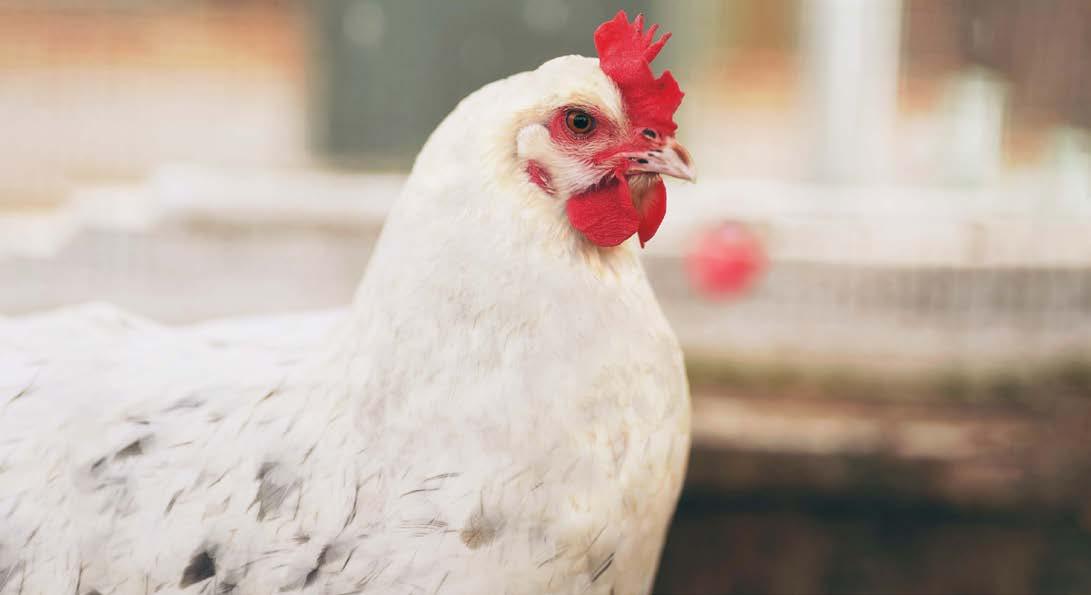
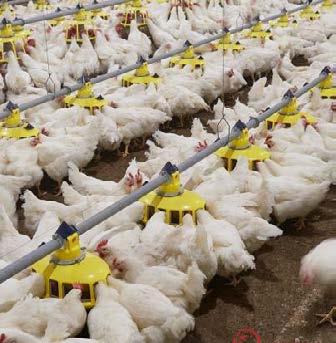
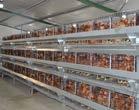
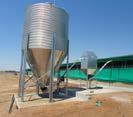
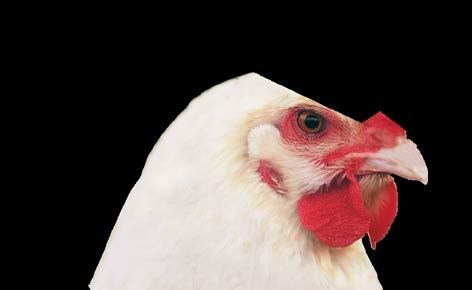










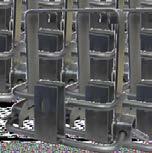






Ask any progressive farmer what the benefits of strip grazing are, and inevitably, the first answer will be: “It reduces wastage.” True, it does. By re stricting the quantity of grass presented to the animals at any one time, and by forcing the animals to make optimum use of this pasture presented to them, one derives maximum benefit from the pasture. It also eliminates unnecessary trampling, and reduces fouling of fresh, ungrazed vegetation as the animals
Easily monitor and control of your agric energisers via your cell phone app.
Maurice Williamson, Stafix Security Centres CEO, who majored in BSc Agric and has 50 years of experi ence in the strip grazing and the agricultural electric fence industry.
But there are many more benefits to properly managed pasture using tem porary electric fences:
First, two of the points mentioned above have added benefits, namely the concentrated hoof action tramples the dung and helps reduce soil compaction which improves moisture retention, and further more, the dung is spread evenly across the pasture.
Another benefit is that, by giving the animals fresh clean pasture and moving them regularly, one helps reduce disease and foot-rot.
Then there are ben efits to the pasture itself. By back-fencing as one progresses through the pasture, one prevents the animals from regrazing the regrowth and deplet ing root reserves.
Also, the pastures can be grazed at their optimal length. Too often pastures are left to grow out too long, which reduces their nutritional value. Keeping the grass short results in increased foliage as the grass produces additional vegetative tillers.
pasture short enables one to incor porate clovers in permanent, mixed pastures and thus help reduce fertiliser costs.
Note: The importance of grazing at the right stage cannot be overemphasised. If pastures are getting away from one in the growing season, simply curtail the grazing cycle and ensile or make hay or haylage of the excess vegeta tion. Some of this high-quality hay can then be used as a supplement when the animals are on moist young pas ture to prevent scouring or bloating.
All in all, better management practices achieved by using temporary electric fences to strip graze, result in better animal and pasture health which in turn leads to more milk in the bucket, more beef on the hoof or mutton on the lamb, and the main purpose of the exercise –more money in the bank!
These insights are provided by Stafix Security Centres CEO, Maurice Wil liamson (BSc Agric) with 50 years of experience in the strip grazing and the agricultural electric fence industry.
Brands such as JVA and Stafix are the preferred choice when choosing agricul tural energisers for strip grazing. Their world class R & D divisions are constant ly meeting new agricultural challenges with technological developments.
Developments such as the LCD display on their energisers allow for a visual representation of the integrity of the fence providing information such as voltages and stored joules, which assist in identifying faults on the fence line.
The full monitoring and control of your agricultural energisers via a cell phone app compliments the develop ments of the diverse range of mains or battery energisers, JVA solar energis ers and the JVA portable energisers that are compatible with any carry-box with solar panel.

Adapting to agricultural requirements and technological developments results in the ability to offer the best prod ucts in order to continue to profit from pastures.
Pasture strip grazed by animals controlled by a moveable electric fence.
More grass means high er carrying capacity as it controls the production of reproductive tillers which, in simple terms, means that the grass doesn’t go to seed. Keeping the
For more information on strip grazing and agricultural ener gisers, visit Stafix’s website www.stafix.co.za to locate your nearest dealer.
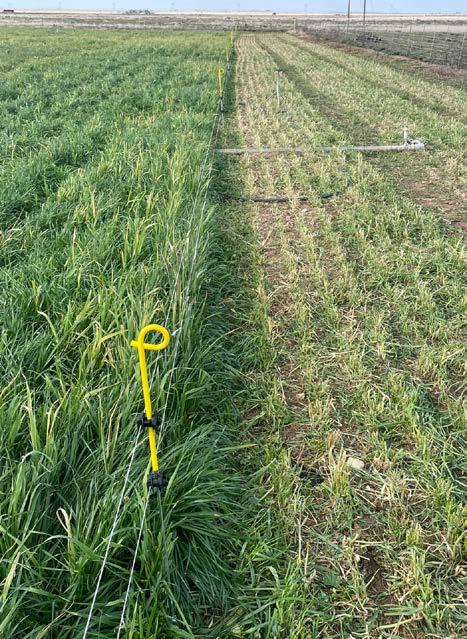



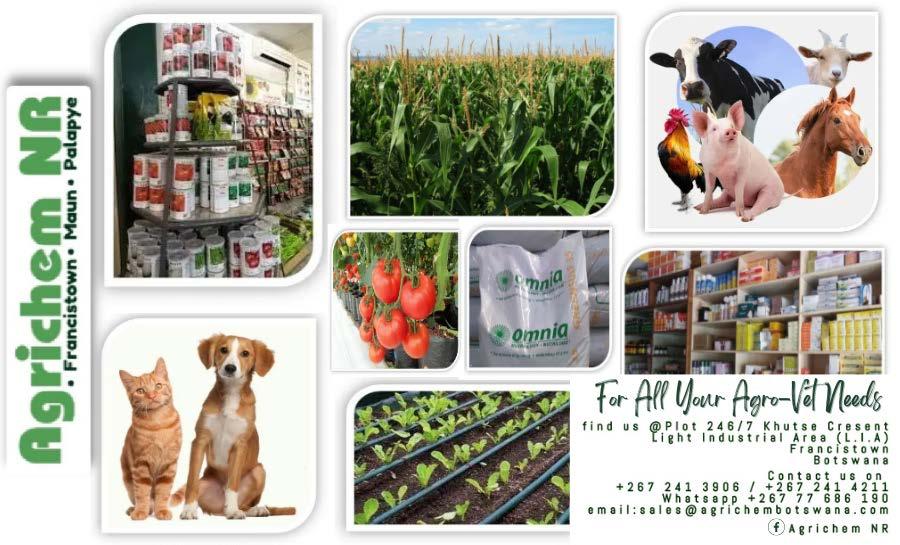
Highly pathogenic avian influenza (HPAI) is one of the deadliest dis eases for poultry throughout the world, and some strains may affect humans, who might die from it.
AI, or bird flu, has resulted in the death and mass slaughter of more than 246 million birds worldwide between 2005 and 2020, with peaks in 2006 and 2016. During these two years, about a quarter of the world's countries was affected.
Up to now, several humans have been infected with subtypes of H5N1 and other subtypes, about half of which have succumbed to the disease. There
are no specific vaccines for preventing Influenza A (H5N1) in humans. Because the strains evolve, it is of great impor tance to keep this disease at bay.
Biosecurity and vaccination are fun damental to successful health man agement of poultry. Vaccination helps prevent endemic diseases that are already there, while biosecurity helps prevent the introduction of disease from elsewhere.
A biosecurity programme must take into consideration three factors, name ly location, farm design and operation al procedures, which are all designed
Migratory wild water birds have been proven to spread bird flu. (Source: Pixabay)
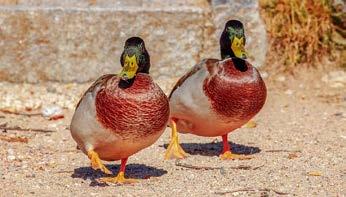

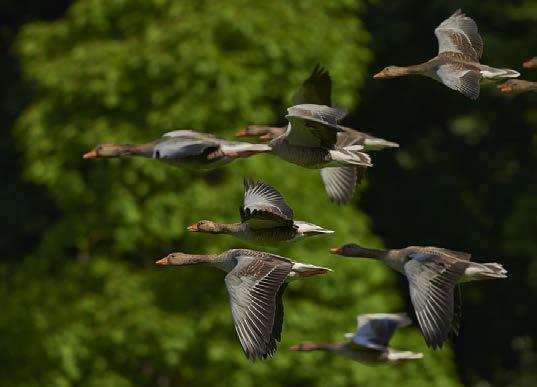
Left: Whole flocks of ostriches had to be culled because they were suspected of being infected with avian influenza, and farms had to be quarantined. (Source: Pixabay)
by Tisha Steynto keep pathogens or disease-causing organisms away from the flock.
Isolate farms from other poultry, live stock, and other animals and birds, and keep poultry of the same age and from the same supplier in a poultry house to prevent cross-contamination.
Create a barrier by erecting a fence to prevent any unauthorised person or animal to have access to your poultry house. Design the farm to have a sin gle entrance/exit that can be controlled to keep out humans and animals alike.
Poultry houses must be designed to facilitate proper cleaning daily and dis infecting between flocks. The poultry house must be proof against insects, rodents and wild birds to prevent these unwanted critters carrying disease from sneaking in.
In some areas where ostriches are farmed, no poultry species, includ ing chickens, ducks and geese, were allowed in case they spread AI to the ostriches. (Source: Pixabay)
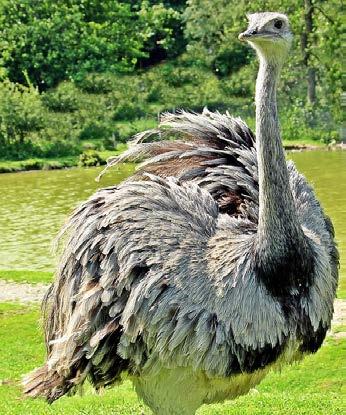
Prevent the introduction and spread of disease with procedures that control the movement of people, feed, equip ment and animals on the farm. Enforce strict rules to ensure that contamina tion is prevented.
The following procedures must be followed:
Humans Commercial poultry farmers reduce the risk of humans bringing diseases into their production systems by fencing in their poultry houses. You must enter through a reception area where you sign in, so that, in case of an infec tion, it can be traced to the person who entered at a specific time.
In addition, there is often a walk-
The movement of wild birds cannot be contained, so poultry farm ers must ensure that they protect their birds from random visiting birds. (Source: Pixabay)
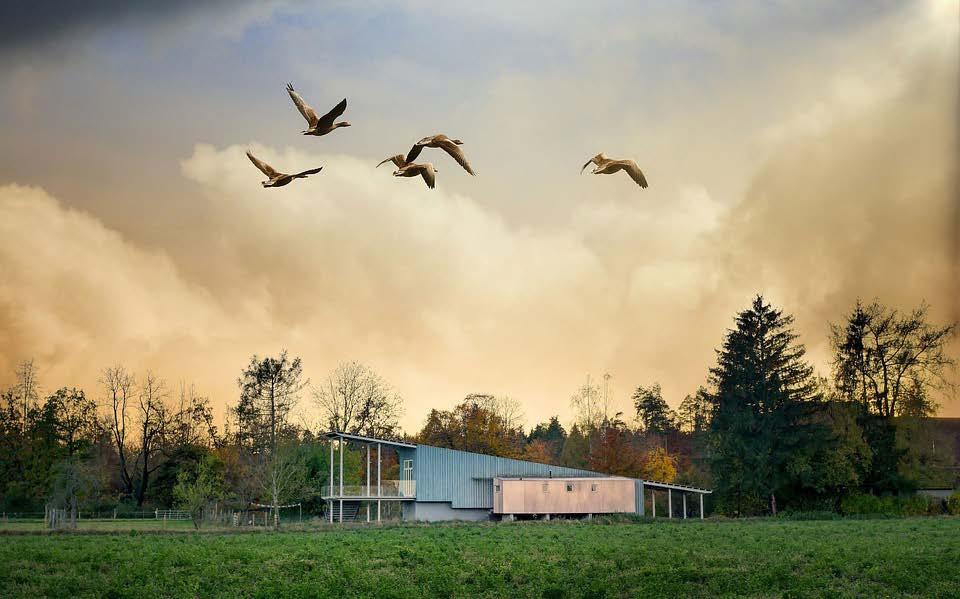
Wild birds, like seagulls, are susceptible to bird flu. (Source: Pixabay)
through shower where everybody – farmer, veterinarian, workers and visitors – must have a shower and put on clean clothes and shoes before they are allowed to enter the premises.
Where people are not required to take a shower every time, there must at least be a footbath with disinfectant that they must step into before enter ing the production area.
No clothes or shoes that were worn outside the poultry units are allowed inside, because it has been proven that clothes, dirty hands, and even human hairs can carry the disease. Cloth ing used inside the premises must be washed on the premises to ensure it remains disease-free.
It is not always possible to have all these precautions on your small-scale
Hundreds of sea birds died as a result of AI during a recent out break in the Western Cape. (Source: Pixabay)


farm, but you can insist on restricted entrance, and make sure that you have special clothes, like overalls and boots that you wear only inside the poultry house. Personal hygiene is also impor tant: wash your hands before and after handling chickens.
All farming equipment, as well as poul try feeding and drinking equipment, should be cleaned on the premises to prevent a build-up of bacteria, and pre vent diseases from spreading from one house to the other, or from one bird to another. Any item that is removed from the poultry house must be disinfected before it is returned.
Rodents, like mice and rats, carry lice, mites and flies that can cause disease in poultry. (Source: Pixabay)

It is most important to prevent ve hicles from bringing disease onto your farm. Vehicles that transport chickens, feed, or new litter to your farm, must be sprayed with disinfectant before being allowed onto your property. Their movement must also be restricted to a specific area.
Feed can also contain contaminants, such as mould, which can produce tox ins. To reduce the risk, farmers must buy only the best quality feed from a reputable supplier. For a small poultry farm, it is best to buy feed in small quantities and not in bulk. Feed must be properly stored in a dry, cool place with a lock and where no other people, birds, or rodents can get in. Discard old, mouldy food.
The chickens are kept in houses to limit their contact with all other animals, including other chickens.
It is good practice to group your birds in batches according to the time they arrive and their age. In this way one batch from a specific supplier arrives and leaves at the same time, limiting the possibility of contamination from other suppliers’ farms.
It is essential to clean and disinfect poultry houses and the area surround ing them after a batch has left and before a new batch arrives.
Also, any sick or dead birds must be removed immediately and either buried or burned some distance from your farm.
Keep wild birds away from your chickens. Wild birds, especially migrat ing waterfowl, are known to be carriers of pathogenic avian influenza (HPAI), also known as bird flu, which is highly contagious and deadly. The droppings of wild birds, or dead wild birds, may also pollute drinking water, which may cause disease outbreaks.
Rodents, like rats and mice, are a big concern, because not only do they eat the feed, break eggs and kill young chickens, they also carry diseases and parasites like lice, mites and flies. Poul try houses and food storage facilities must be rodent-proof, and baiting or trapping programmes must be in place to keep their populations in check.
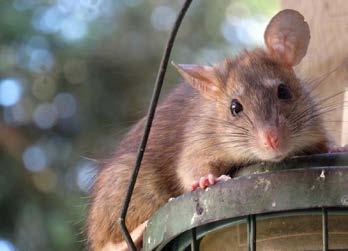
Pets must also be kept out of the production area.
A community must work together to promote biosecurity, because no farm can do it on its own. It is practically impossible to contain disease when chickens are allowed to scavenge around the community for food.
Unless a barrier between these freeranging birds and your poultry house can be erected, it is essential that the community work together to remove sick or dead birds from the rest of the flocks.
Every farmer must buy poultry only
Personal hygiene is of utmost importance, and washing your hands before and after handling chickens is the first step in preventing the spreading of disease. (Source: Pixabay)
Remove old litter, dirty bags and any rubbish from your poultry houses and yard, and dump it far away from your farm, but in such a way that it does not contaminate the environment.
• Discard old, damp feed as it can also make your birds sick.
Small-scale farmers should not buy feed in bulk, but only in smaller bags to prevent the food from be coming mouldy and making your chickens sick.
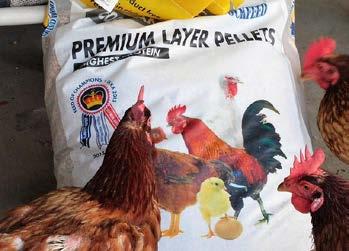
from a reputable source, and keep new birds separate from existing flocks for a few weeks to ensure the new birds are not a health risk, bringing disease to the community.
It is important to inform authorities of any disease outbreak.
It is also important to keep contact with buyers of chickens to a minimum, especially if they are known to travel from farm to farm to buy birds.
Do not eat sick birds or those that have died because of disease.
• It is most important to keep your poultry farm clean in order to keep it free of disease.
• Place a footbath with disinfectant outside the door and use a special pair of shoes for working inside the poultry house. Wash your clothes and keep your body and especially your hands clean.
• Clean and disinfect the poultry houses between batches of chick ens, and leave them empty for at least a week to get rid of diseases that need a host to survive.
Do not overcrowd your poultry houses. Make sure the birds have enough clean water, fresh air and light – preferably sunlight. Damp, dark and mouldy conditions breed disease.
• Wash your hands before and after handling chickens!

Resources Arbor Acres broiler management guide. (2009) Aviagen https://eu.aviagen.com/assets/ Tech_Center/AA_Broiler/AABroilerHandbook2018-EN.pdf High pathogenic avian influenza (HPAI) situation report.
A (H5)
Ani
Animal
United Kingdom
Great Britain and Northern Ire
Health Organi
Kriel, G. (n.d.) Biosecurity in Poultry
Poultry Farming in South Africa
co.za/biosecurity-in-poultry-produc tion.html



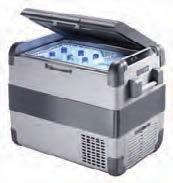
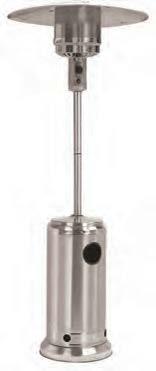
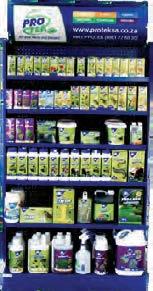
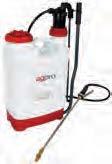





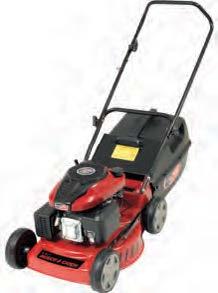


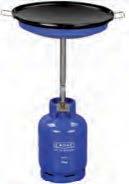







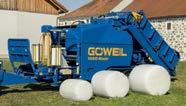
In a world of rapidly changing tech nology and creation of more effi cient systems, manual labour is slowly becoming a thing of the past, and with this conception of new technology, the application of artificial intelligence (AI) is on the rise.
AI is a branch of computer science that is concerned with building smart machines capable of performing tasks that typically require human intelligence. The main purpose of artificial intelligence is to enable computers to perform such intellectual tasks as decision-making, problem-solving, perception, and under standing human communication.
What does it mean for agriculture? It means decision-making and reaction time when it comes to important agri cultural decisions can be quicker and more precise than ever before, whilst simultaneously giving rise to the exten sive use of remotely controlled tractors, greenhouses, or irrigation systems.
Unlike humans, AI only needs a power source and the corresponding software and hardware. From there it is available all day to manage what ever farm activity it has been assigned to manage or participate in. Not only does this cut down production costs that would have been incurred using humans for labour, but it also improves the turnover time, making the produc tion activity easier to complete. With repetitive jobs, AI works with a stored memory of activities which then also
Reactive AI revolves around the rudimentary AI principles. This form of intelligence can only interpret and process information (visual or auditory) presented to it. A reactive machine does not keep a memory, thus cannot depend on past occurrences for judge ment-making instantaneously. Such technology can be used for drones to identify and spray chemicals upon detecting the presence of unwanted weeds, insects or pests.
Unlike reactive AI, limited memory can keep information and make fore casts during data collection, evaluating plausible actions or conclusions. Lim ited memory AI is quite multifaceted and has a wider scope of application compared to reactive machines. It can be used to predict weather patterns based on historical rainfall patterns.
AI applications in agriculture help farmers improve accuracy and con trolled farming by providing proper guidance to farmers about water management, crop rotation, timely harvesting, types of crops to be grown, optimum planting, pest attacks, and nutrition management.
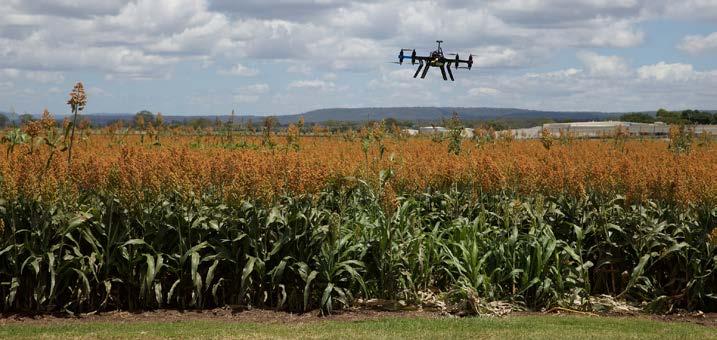

Benefits of AI include reduction in human error. AI helps reduce the number and severity of errors by add ing large-scale data analysis to human judgement in agricultural decisions, and the systems and machines takes risks instead of humans.
makes a performing the same task a walk in the park.
Other benefits of AI are the digital assistance it provides where informa tion is readily available online, and up loading and updating of farming related programmes can be done to expedite decision-making.
• Reactive AI
• Limited memory AI
• Theory of mind AI

• Self-awareness
Theory of Mind is based on the psy chological foundation of understanding that other living things have thoughts and emotions that affect the behaviour of one self. With regard to AI ma chines, the technology would then be able to understand how living creatures and non-living machines feel and are able to make choices by self-reflection and willpower, and afterwards use this data to decide independently how to proceed. A future farm can be run by AI as it is able, for example, to ana lyse labour force moods based on an analysis of their facial expressions and body language to determine their state of health or exhaustion.
In first world countries all this seems realisable, but in most of the develop ing countries of Africa, such achieve ments are beyond the imagination and lack of investment.
Whether Africa is ready for artificial intelligence still remains a question as there will need to be a balance in find ing a solution for these challenges with out threatening the livelihoods, income and employment of the inhabitants.

Jute Mallow and Ethiopian Kale are two ancient African plants that are used as leafy green vegetables.
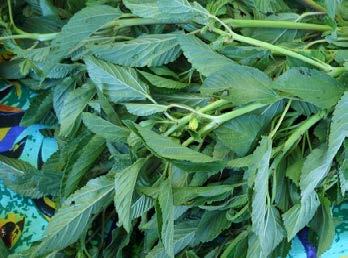
Jute mallow (Corchorus olitorius) Jute mallow belongs to the Malvaceae family, one of the important leafy veg etables in most parts of Africa, includ ing Southern Africa.
Its origins are unknown because it has been around for ages in tropical and subtropical regions all over the world.

Leaves and young shoots are nor mally harvested when about 20 to 30 cm long. These are boiled with locust beans (Parkia biglobosa), lemon or olive oil, steamed and pureed, and added to soup or chicken dishes. Young leaves are also added to salads.
The leaves are also dried and used to make tea or to thicken dishes. When pounded into flour, it can be stored for quite some time. The seeds are also edible.
In India, Bangladesh and China, the plant is cultivated for its fibre. The stem is the main source of jute used in sack cloth and paper, among other uses. The wood is light and soft and is used in making sulphur matches.
The plant is easily propagated from seeds. Soak the seeds in warm water for 24 hours for the best germination results before sowing directly in the soil.
Seed can be scattered into seed beds containing fine soil. Mixing the seed with sand makes it easier to sow evenly. Seed can also be planted in rows 20 to 30 cm apart.
Sow seeds in full sun at the begin ning of the rainy season. If planted in rich soil, no fertilisers are needed, but nitrogen will enhance rapid growth. If planted in the dry season, controlled manual watering is necessary as the plant suffers when the soil is water logged or too dry.
Four to six weeks after planting, when the shoots are 10 to 20 cm long, they should be transplanted. The first harvest is ready for cutting when the shoots are between 20 and 30 cm long. This cutting stimulates the develop ment of side shoots. If you cut every two to three weeks, a total of up to eight cuttings is possible.
Brassica carinata and B. juncea, which are often confused because they are so similar, are the two most widely used leafy vegetable species in Africa.
tive potential. Researchers pointed out that in general, the consumption of B. carinata should be encouraged as part of chemo-preventive measures to combat prevalence of aflatoxin-induced diseases. The seeds are used to relief stomach aches.
The species tolerates a wide range of climatic conditions and can be grown in temperate to tropical zones. In cool regions it is suitable as a leaf crop, but in other areas it can also be grown for the seed.
The plant grows best in areas where annual daytime temperatures are be tween 10 and 25 °C, but it can tolerate 5 to 35 °C. It is successful in full sun when planted in well-drained, fertile, and preferably alkaline soil. The plant grows in almost any soil, but prefers a pH in the range 5,5 to 8.
Flowering is delayed when the leaves are regularly harvested. Seedlings of varieties with larger leaves like those found in West Africa and Tanzania, must be planted at a spacing of about 75 x 50 cm.
Varieties with smaller leaves found in Zimbabwe, can be planted with a spacing of 50 x 35 cm. Once the plant is established, the leaves can be fre quently harvested. The smaller-leaved varieties are often collected in the form of shoots.
The leaves contain almost all the nutrients needed by humans, includ ing lipids, protein, and carbohydrates. They are rich in beta-carotene, iron, calcium, and antioxidants, as well as micro-nutrients such as potassium, magnesium, iron, copper, and manga nese. It is an essential as a source of energy in human and animal nutrition.
All parts of the plant have been used as medicine to treat various illnesses, including aches and pains, fever, dys entery, enteritis, pectoral pains, and tumours. It contains iron and folate that are useful to avoid anaemia. The leaves are also used to treat cystitis, gonorrhoea, and dysuria or painful urination. The seeds are purgative. The high fibre content makes the leaves fill ing and good for weight loss.
B. carinata, also known as Ethiopian or Abyssinian cabbage, is grown in East African, West African, Central and Southern African countries, as well as Madagascar, Asia, and India.

The waxy stem, light-green stalked leaves, and immature flowering stems with their yellow flowers are edible. Aviation biofuel for jet engines have been developed from the plant.
Leaves and young stems are harvest ed when they are 30 cm tall. They are eaten raw or cooked, and have a mild and pleasant cabbage flavour. Young growth can be finely shredded and used in salad, while the older leaves are cooked like cabbage leaves. Im mature flowering stems are cooked and used like broccoli, and the seed can be crushed and used as a condiment.
B. carinata has proven cancer preven

protein) mixed according to milk yield or stage of lactation. The breed is ge netically able to adapt to very different agro-ecological areas, but it cannot handle the heat in some areas.
The Holstein breed has a large number of potential artificial insemination sires due to its status as the world's most populous dairy breed. This means that it would be possible to maintain genetic progress for milk yield while improving traits like fertility.
Holsteins produce many calves that can be distinguished by their rapid growth, early maturing, and ease of care. The fine-fibred meat produced has a high growth percentage in the fattening sector.
Modern jerseys come in a wide variety of colours. Jerseys tend to be fawn in
Holsteins are easily recognisable due to their distinct markings, which are most often black and white, but can also be red and white. The breed originated in the Netherlands, where a few strains originated known as the Holstein, the British Friesian and the Dutch type. These dairy cattle form part of the Bos taurus group.
The average milk production for a lactating cow of this breed is 8 550 li tres over a lactation period of 305 days (or 28 litres per day). This robust and heavy cow weighs between 550 and 750 kilogrammes, and the bulls can exceed 1 tonne in weight. Milk typi cally has a fat content between 3,0 and 4,2% and a protein content between 2,5 and 3,8%. The butterfat is low and the milk yield is considered to be high.
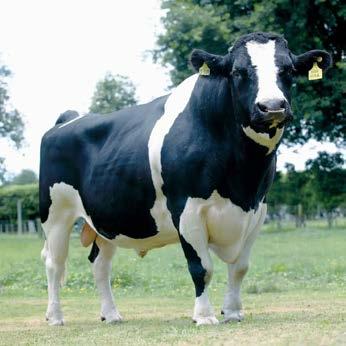
Large-framed Holstein cows will not do well when feed is scarce or of low qual ity. Most often, Holsteins are utilised in intensive housing or open camp settings, both of which are examples of zero-grazing systems. They are fed a total mixed ration consisting of forages (hay, grass) and concentrates (boughtin pellets that are high in energy and
by Natasha Krugercolour, but you might also see them in shades of grey, red, spotted white, or even near-black. In most cases, the underside of the cattle of this breed is a lighter colour than the top.
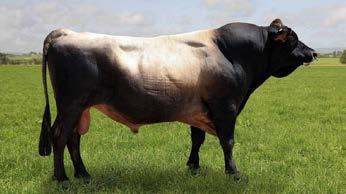
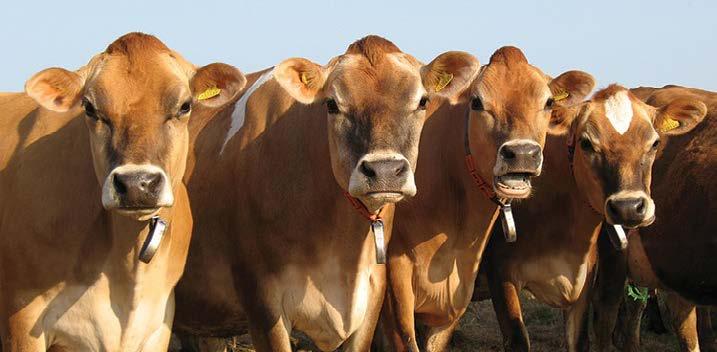
Jersey cows weigh between 350 and 550 kilogrammes and are smaller than Holsteins. The bulls can weigh between 600 and 700 kilogrammes. Jersey milk has higher levels of solid components
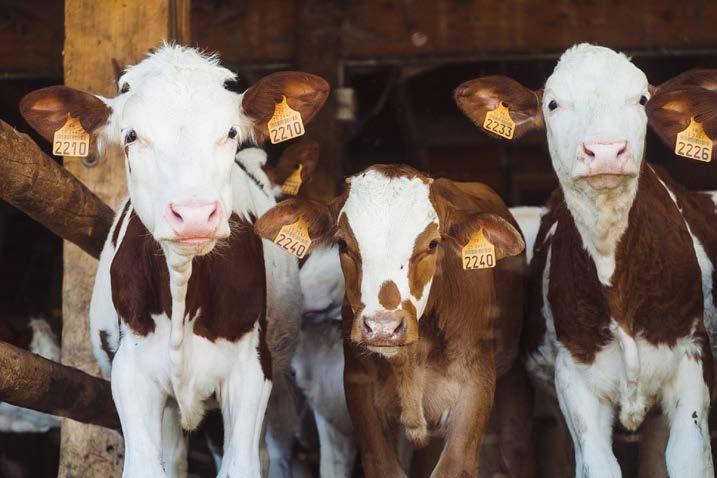
than Holstein milk, with fat levels of 4,0 to 5,5% and protein levels of 3,5 to 4,5%. This makes the milk rich with the highest percentage of butterfat and protein.
The Jersey produces more kilo grammes of milk per kilogramme of body weight than any other breed. However, their milk yield is lower than that of Holsteins, at around 5 000 litres per lactation. These dairy cattle form part of the Bos taurus group.
Jersey bulls are notoriously aggressive, but Jersey cows are known for their placid demeanour. Because of their superior grazing ability and lower milk yield requirements, Jerseys are com monly used in pasture-based systems. Jerseys are also the dairy cows with the highest heat tolerance. They can adapt to a wide range of climatic and geographical conditions.
An established breed since at least 1812, the Ayrshire can trace its roots all the way back to the district of Ayr in the southwest of Scotland.
duces milk with a fat and protein content that is somewhere between that of Hol steins and Jerseys. The fat particles in their milk are evenly distributed, giving it a smooth, creamy texture and a mild, sweet flavour. The milk is high in solids and gives exceptional cheese yields.
Because of its high grazing efficiency and high feed conversion ratio, the Ayrshire is a popular breed. Being able to produce in either hot or cold weather is one of its most appealing features.
The breed does well in a wide range of management systems, from inten sive stall systems to different kinds of grazing systems and even systems with no grazing.
Cattle from the Guernsey breed range in colour from a light yellow to a deep reddish brown with patches. The cows’ weight can be anywhere from 400 to 550 kg, and the bulls can weigh between 600 and 700 kilogrammes. High-quality milk can be produced by Guernseys despite the fact that they
A deep reddish brown Guernsey cow. (Image source: motherearth news.com)
the calving process. Their yield and milk quality (fat and protein content) fall somewhere between the Jersey and the Ayrshire.
Southafrica.co.za. (2022). South Af rican Beef Breeds. [online] Available at: https://southafrica.co.za/southafrican-beef-breeds.html
Loubser, A., Schutte, N. and Hofmeyr, I., (2007). Cattle breeds of South Africa. Pretoria, AgriConnect, Pages 184 - 201.
use 20 to 30% less feed than larger dairy breeds. These dairy cattle form part of the Bos taurus group.
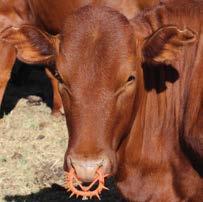
The breed is wide awake and alert without being anxious or irritable. Physically, the Guernsey cow has good dairy conformation and presents the visual impression of a plain animal bred for utility rather than good looks.
Guernsey cattle are well-known for their extraordinary adaptability to a wide variety of environmental con ditions. This breed is known for its potential and easy-going nature.
The Scottish Ayrshire is a hardy breed with a wide range of reddish-brown and white coat tones. Ayrshire cows can have a weight of anywhere from 400 to 600 kg, and the bulls can weigh between 650 and 900 kilogrammes.
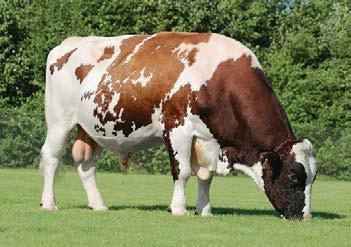

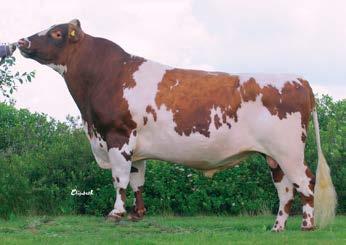
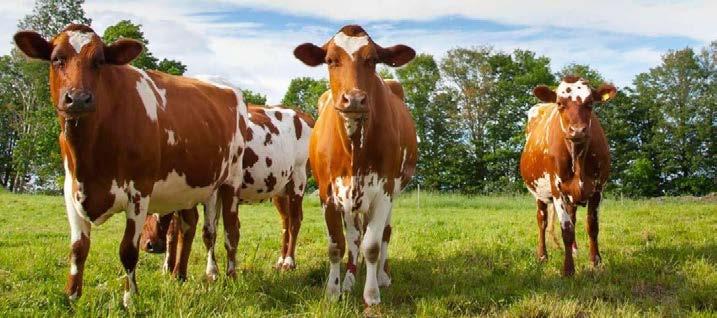
Their milk is referred to as “the ideal drinking milk”. This breed of cow pro


Calves can be born to Guernseys as early as 22 months of age, making them a good investment due to their fast return on investment. Calves born to Guernsey cows are large and robust, and they present few problems during


Eggplant, aubergine or brinjal, what ever you would like to call them, this vegetable has probably made an ap pearance on your plate and is definitely worth growing in your garden or on your smallholding.
The plant, Solanum melongena, is originally from India, but has spread to the rest of the world after it was domesticated from the wild nightshade or bitter apple.

These vegetables provide a good quantity of fibre, vitamins and minerals with few calories, making it nutritional and healthy.
Eggplants can be cultivated in a variety of climates in open fields and tun nels. It is a warm season crop, but can withstand some cool weather. The temperature differences cannot be too extreme as it leads to a lower yield and a lower quality of fruits.

The minimum temperature it can handle is 10 °C, and the maximum is 34 °C. The ideal temperatures are between 26 and 29 °C.
It requires well-drained loam to sandy loam soils but can adapt to most soil types.
The vegetable needs a pH of 5,5 to 6,5.
Eggplants have many culinary uses. It can be boiled, grilled, stuffed, sauteed, roasted, or skewered. The vegetable can be served in stews, soups, stir fries or curries.

Be sure to only eat cooked eggplant, because when they are raw, they con tain a chemical that can cause an upset stomach.
To prepare soil, start with mixing in the residue from the previous crop. Use a disc cultivation to improve the aeration of the soil and distribute the organic matter throughout the seed bed. Soil preparation should be aimed at improving the drainage of the soil and reduce compaction.
Soil preparation needs to be done
between 200 and 400 mm deep as this is where most of the roots grow. Create ridges in the seedbed, approxi mately 600 mm wide.
When cultivating an eggplant crop, the seeds are germinated in seed trays and the seedlings are then transplanted. Mulch, or black plastic, is placed around seedlings prevent them from drying out. Space plants 30 to 40 cm apart, planting them in the middle of the ridges.
Use stakes to keep the plants upright and reduce fruit rot.
When fertilising the vegetables, 22 to 45 kg/ha nitrogen (N) can be applied, as well as 90 to 134 kg/ha of phosphorus
(P) and potassium (K). This is usually broadcasted during soil preparation.
To meet the plant’s total need of ap proximately 168 to 224 kg/ha of nitro gen per season, a weekly dose of 2,3 to 4,5 kg is applied until the flowering stage. During this period, 7 to 11 kg is applied, and 5 to 7 kg when fruiting. Soluble fertiliser is usually applied with water through the irrigation system.

As with most crops, too much or too little water can have devastating repercus sions. These plants can tolerate both drought and excess rain, but not for extended periods.
Irrigation needs to be monitored. When irrigating, ensure that the water pen etrates the soil deeply and thoroughly.
You may need to irrigate more or less often, depending on hot conditions or wet, cooler weather.
A preferred method of irrigation is ei ther drip or flood irrigation as this helps prevent foliar disease.
Take care to provide enough water when plants are flowering, developing fruit and growing fruit.
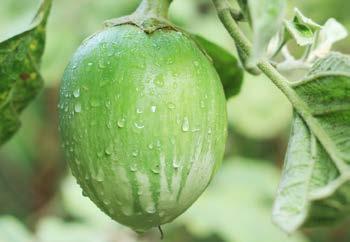
When fruits show a glossy skin and has a size that is market ready, it is time to harvest. This usually occurs 15 to 35 days after flowering. The stem will harden and you will need a sharp knife to cut off the fruits.
If you planted a cultivar that has elon gated fruit, it may take longer to ripen.
Remove fruit often to encourage fruit set. Fruit that are left too long on the plant become pithy and bitter. The harvested fruit should be washed and packed carefully.
Remember that any herbicides, insecti cides and fungicides should only be used as indicated on the label.
Insects that attack eggplants:
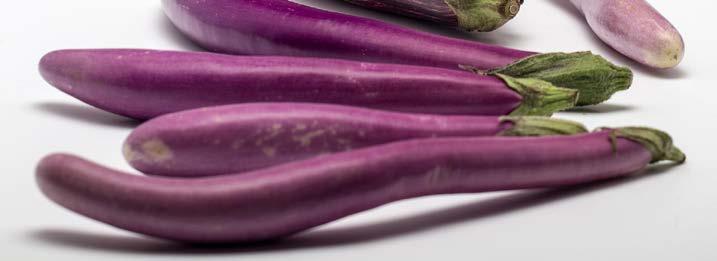
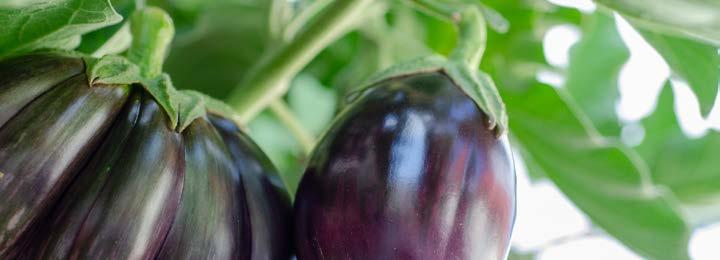
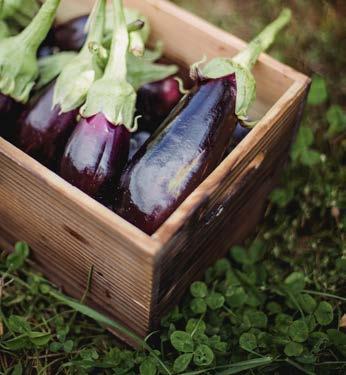
• Spider mites (Tetranychus spp.)
• Green peach aphids (Myzus persi cae)
• Lygus (Lygus spp.)

• Flea beetles (Chrysomelidae)
• Wireworms (Elateridae).
The most dangerous of these are spi der mites. Take care to treat the plants for spider mites as soon as the tem perature rises.
Young plants are most susceptible to flea beetles.
When your eggplants are flowering, monitor the fields for lygus. It feeds on the flowers and causes flower drop. The root-knot nematodes (Meloidogyne spp.) lead to leaf wilt and yellowing.
Leaf spot and fruit rot
One of the diseases that eggplants are susceptible to is leaf spot, and an other is fruit rot. Both are caused by Phomopsis vexans. Symptoms include circular, brownish spots over fruits and leaves. In some cases, symptoms are not present at the time of harvest, and only appear post-harvest.
In order to control them, practice crop rotation and field sanitation, espe cially when the disease is detected. You can also pick the infected fruits and burn them.
This disease is caused by Alternaria sola ni, and is seen as collar rot in seedlings. The leaves are affected at all growth stages and fruits can drop. When plants are under stress, they are more vulner able to the fungus. It favours tempera tures between 16 and 32 °C.
Through proper field sanitation and using disease free seed, the fungus can be controlled. If you use your own seed, ensure that it is heat and water treated.
This wilt is caused by Verticillium
albo-atrum and it affects the vascular system of the plants. This results in stunted growth, discolouration, and leaf drop. Plants eventually die. This fungus flourishes in temperatures be tween 13 and 30 °C.
It is characterised by yellowing leaves and plants dying off. Practicing crop rotation can have positive effects in
There are different shapes, sizes and colours of eggfruit. (Source: Pixabay)
It is caused by Colletotrichum melon genae. Symptoms appear as sunken spots and lesions on the fruit. When the temperature is between 13 and 35 °C, and humidity at 93% or higher, the fungus is most active.
Control measures to implement include crop rotation and certified disease-free seeds or resistant varie ties. Infected crop residue should be destroyed.
managing the disease. The dagger nematode (Xiphinema spp.) is usually responsible for transferring TRSV.
The information provided in this article is credited to the Agricul tural Research Council Vegetable and Ornamental Plant Institute (ARC-VOPI). For more information, contact +27(0)12-841-9611 or visit http://www.arc.agric.za

An optimized drive concept of the latest generation enables precise, fast, and efficient work. The electronically controlled hydraulic pump permanently adapts the required hydraulic power to the available power of the diesel engine.


There was once a time when weather patterns were stable, and the ef fect of destructive weather patterns was not a great threat; a time when farmers had a more than 70 percent guarantee that whatever rained-fed crop was planted would grow without any major external hindrance. Climate change has changed that.

Climate change refers to longterm alterations in temperatures and weather patterns. The alterations may be influenced by natural or humandriven activities. Natural effects can be caused by variation in the solar cycle, reflectivity or absorption of the sun's energy, volcanic activity, and changes in the earth's orbit. Humandriven activities include burning fossil fuels like coal, oil and gas.
The symptoms of climate change have been evident as much of Africa has already warmed by more than 1 °C since 1901, with an increase in heatwaves and hot days. A reduction
in precipitation is likely over North Africa and the south-western parts of South Africa by the end of the century, according to the Intergovernmental Panel on Climate Change (IPCC).

Other signs of climate change in sub-Saharan Africa are heat extremes which are temperatures 3 and 5 standard deviations above the his torical norm, precipitation changes, increased aridity and evapotranspira tion and a sea-level rise.
Unfortunately for sub-Saharan Africa the lack of a proactive mitiga tion measures against the effects of climate change will stand in the way, and will keep us lagging behind as the rest of the world continues to spur forward. Low levels of adaptive ca pacity, poor diffusion of technologies and information relevant to support ing adaptation, and high dependence on agro-ecosystems for livelihoods are the reasons we’re behind in ad dressing climate change issues.
Already many sub-Saharan Africa farmers are immensely affected by climate change as they face challenges with accessing water as some rivers dry up and dams are not filling up. In some regions, floods have caused agricultural farm land to be lost. Heat stress has caused crop yields and livestock productivity to decrease. The increasing prices of food due to agroproduce scarcity contribute to poverty and malnutrition.
Women labourers often experience additional duties as caregivers and as well as from societal responses to climate change after extreme weather events, for example in the case of male migration which also reduces the availability of a strong and de pendable agricultural workforce. More conflicts transpire as people fight over the limited natural resources, fertile ground and water.
The best way the farming commu nity can confront the climate
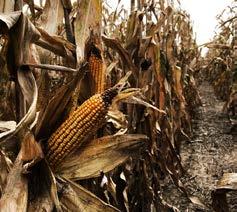



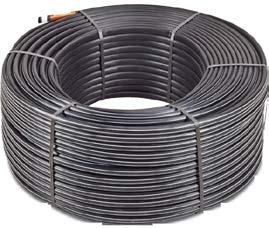
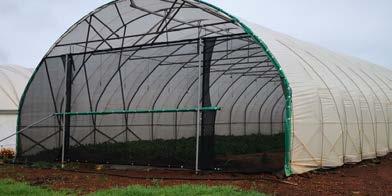




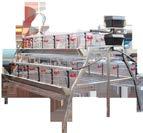
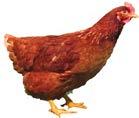



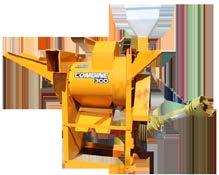


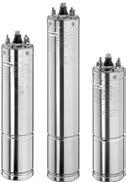

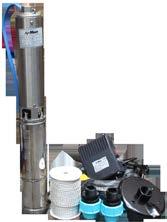




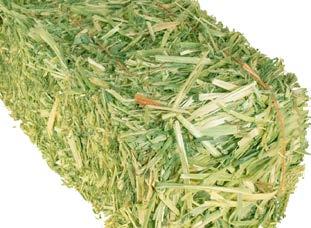



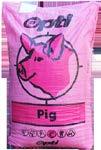

change effects is through planting crop varieties and species resistant to heat stress, shocks and drought, adapting water conservative irriga tion systems, using water-efficient mechanisms to collect and save water, conserve soil moisture, and re duce siltation and saltwater intrusion, and through incorporating systems to prevent waterlogging, erosion and nutrient leaching.
Furthermore, crop calendars can be changed to improve the timing and location of cropping activities ac cording to season and climate status. Crop, livestock, forestry and fishery projects at a farm level can be mixed and farmers should seek informa tion and services related to seasonal climate forecasting.
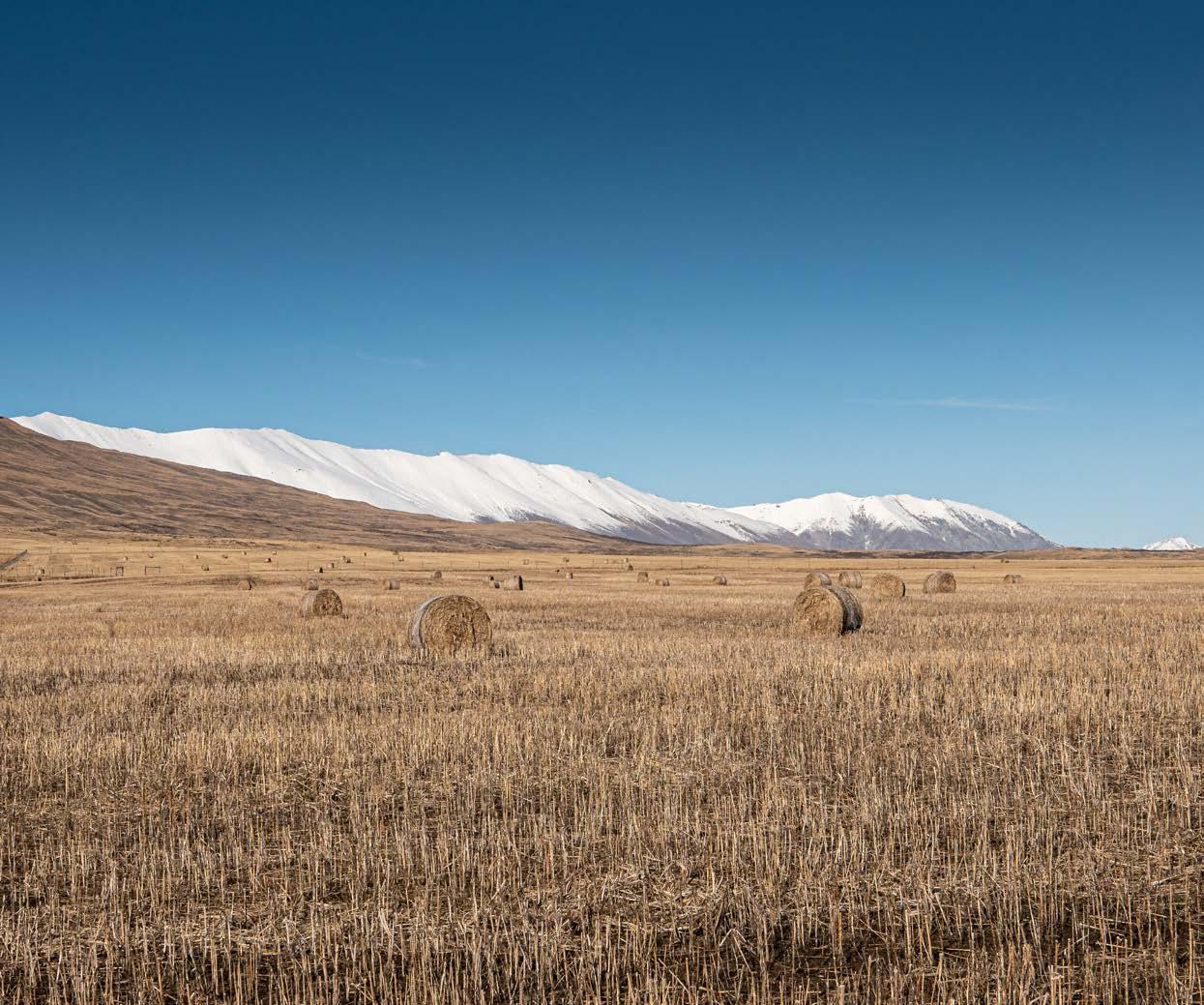
At government level, SSA countries
will have to promote the use of waterwise irrigation systems, low and no-till agricultural practices. Projects support ing income diversification and disaster risk management can be established.

More effort has to be put into opti mum agricultural extension services provision so as to increase yields and improve information exchange be tween and among communities across the region. The emancipation of women and other marginalised social groups must be upgraded.
A 2016 article titled Climate change impacts in Sub-Saharan Africa: from physical changes to their social reper cussions, published in the Regional Environmental Change magazine, pre dicted that due to climate change, East Africa was at a higher risk of flooding and concurrent health impacts and
infrastructure damages. West Africa was projected to experience severe impacts on food production, including through declines in oceanic productiv ity, with severe risks for food security and negative repercussions for human health and employment. South Africa was set to experience the strongest decrease in precipitation with concur rent risks of drought.
A few years later and up to now these are effects we continue to ex perience; thus the sub-Saharan Africa stance must be more progressive and aggressive for survival’s sake. Only when these challenges are tackled can the region’s human health and safety, food and water security and socio-economic development improve.
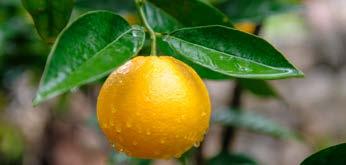

The Citrus Growers’ Association of Southern Africa (CGA) is proud to announce that citrus growers in Bot swana have become members of our organisation, joining over 1400 from South Africa, Eswatini and Zimbabwe. With the addition of Botswana, the CGA now represents just over 1564 citrus growers in Southern Africa.
The CGA hopes to help maximise the long-term profitability and sustainabil ity of Botswana growers, by providing them with increased access to global markets, assisting them to optimise the cost-effective production of highquality fruit from their region and making industry resources available to them including the latest research from globally recognised Citrus Research International (CRI).
There are currently 164 citrus growers in Botswana, with 94% of these being small-scale farmers that produce citrus in under 5 hectares and the remaining 6% falling into the category of medium to large-scale farmers. The sector cur rently supports just over 1 000 jobs, with 75% of employees being female.
CEO of the CGA Justin Chadwickshares: “We are thrilled to welcome Bot swana citrus growers to our association. Supporting small-scale growers is one of the main focus areas of the CGA and its Grower Development Company – we look forward to sharing our knowledge and expertise with Botswana growers. Southern African growers have become renowned for their excellent quality fruit, which is the result of a major investment in research and innovation over the past few years and we look forward to continuing to expand the CGA footprint to other African countries.”
Johan van Vuuren, the Operational Manager at Selebi Phikwe Citrus, one of the biggest citrus farms in Botswana states: “Joining the CGA is a great achievement when it comes to unlock ing opportunities for citrus growers in our country. Our farmers and labour force face several challenges when it comes to accessing critical industry re sources to improve and grow the sector.
By becoming members of the CGA, Botswana citrus growers will now be able to unlock increased access to these critical resources and support structures to ensure the continued growth of the industry, farms and busi nesses. We look forward to using the CGA as a platform to share and absorb knowledge from others who have more experience in this line of work.”
The CGA remains committed to repre senting and furthering the interests of citrus growers across Southern Africa, so they remain key economic contribu tors in their respective countries.
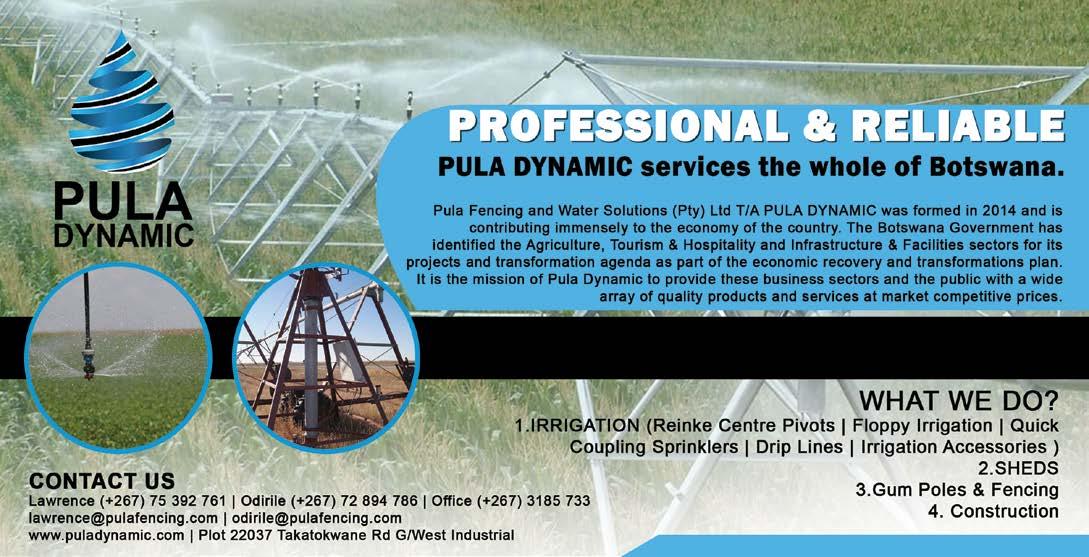

A cover crop keeps the soil moist and protects it from the rays of the sun. (Source: Adele Payman, unsplash.com)
The frequent use of chemical fertilisers and pesticides has a negative impact on soil microbiology.(Source: Pixabay)
The need to put carbon back into the soil where it belongs instead of being released into the atmosphere as carbon dioxide that contribute to global warming, is very real. There is no time to waste while the world is seeking environmentally friendly alternatives to using fossil fuels as energy, says Ken Coetzee of Environmental Management Services.
The term ‘carbon sequestration’ has become a buzzword in discussions about environmental issues. Ken ex plains what it is:
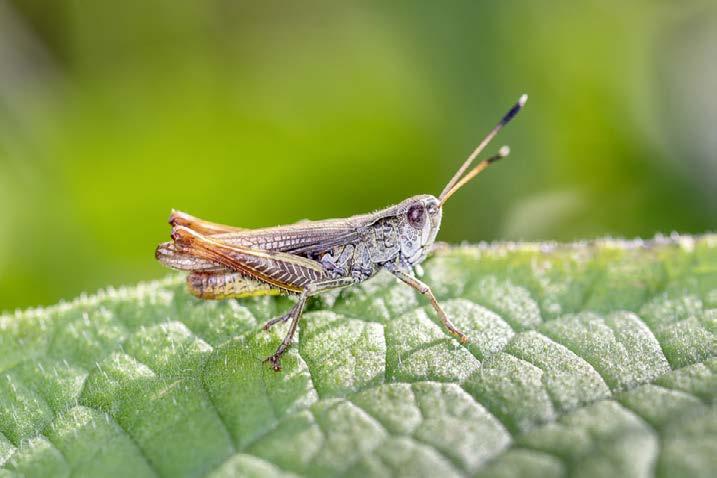
“Modern mechanised industrial agriculture has caused the leaching of carbon from the soil in cultivated croplands. The importance of returning carbon to the soil is a relatively recent aspect of the global warming mitigation debate, but it can help mitigate the present dire conditions.
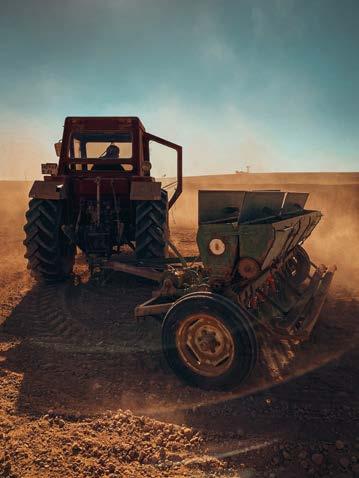
“Up to between fifty and seventy per cent of all cultivated soils in the world have lost most of their original carbon stocks. This is a result of exposure which causes the carbon stored in the soil to become oxidised and modified into atmospheric carbon dioxide (CO²).
“In addition, typical agricultural prac tices have resulted in an estimated loss of twenty billion tonnes of fertile topsoil every year and this represents a direct loss of carbon stored in the soil.
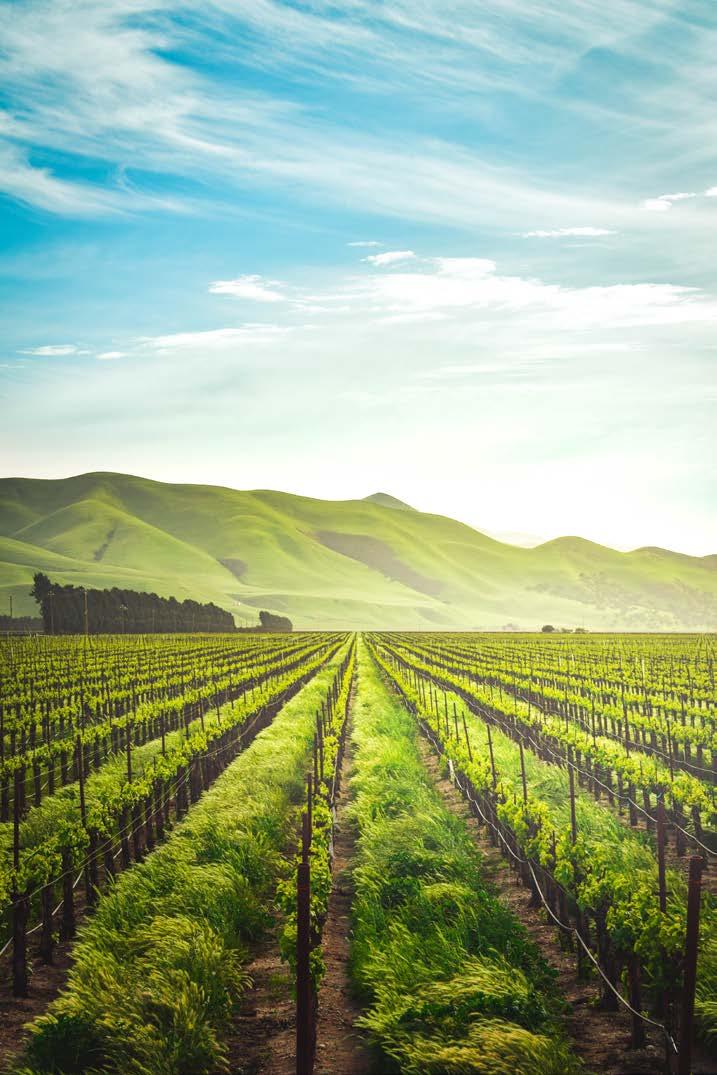
“Soil-carbon sequestration must thus be an essential part of global warm ing mitigation, and this can be partly achieved by restoring degraded and eroded landscapes.”
Unfortunately, there seems to be no urgency to stop and reverse these trends, which appear to continue unchecked. “We hear of the reforesta tion of tropical forests, the restoration of mangrove swamps, and the mass planting of trees in the Sahel in North Africa, but there is hardly ever a men tion of large-scale soil erosion control.
“If we do not collectively take effec tive and committed action with much more urgency than at present, we shall see the destruction of our home.”
How is carbon lost from the soil?
Ploughing, subsequent erosion and the uncontrolled use of non-organic chemi cal fertilisers and pesticides exacerbate the problem.

Frequent ploughing disrupts the habitat of micro-organisms below the surface of the soil where plant litter and carbon is stored. Deep ploughing destroys the root environment that is the habitat of micro-organisms necessary for maxim ised growth. When these systems are exposed to solar radiation and oxida tion, the soil loses its carbon.
“Therefore, a no-till or regenerative approach to crop production is a far better option for maintaining long term
soil health,” suggests Ken.
Ploughing also leads to erosion, whether caused by wind or water. When soil surfaces are exposed be cause of a lack of plant cover, either by planting monoculture crops, tilling or overgrazing, the soil carbon is oxidized and lost as CO² into the atmosphere.

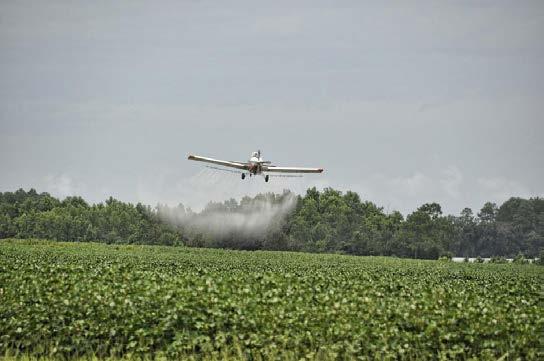
The frequent use of chemical fertilisers and pesticides, which include herbi cides for plants, insecticides for insect pests and fungicides for unwanted fungi growth has a negative impact on soil microbiology. The loss of soil-form ing organisms is followed by a reduc tion of organic material in the soil, which leads to the soil’s reduced capacity to store carbon.
“This can be offset by stimulating natural soil recycling by encouraging the application of organic material, in cluding biochar and manure, to the soil
to improve productivity and help lay an effective foundation for improved carbon storage.”
The quantity of carbon in the soil can be determined by soil carbon experts in a laboratory. “The depth of the dark layer of soil near the soil surface is a good layman’s indicator of organic soil carbon. The deeper and darker the soil, the better the soil carbon content.”
Putting carbon back into the soil not only helps to mitigate global warming, but also offsets the continuing nega tive impact of burning fossil fuels. In addition, it improves the fertility of the soil that is essential to feed a rapidly expanding human population.
“Recent research has shown that more carbon is stored in the soil than in the atmosphere and all the combined plant life on earth,” says Ken. “It follows that every possible opportunity to in crease soil carbon in all the ecosystems on earth should be explored and imple mented as a matter of great urgency.”
Ken believes the restoration of soilstored carbon is a relatively simple matter of returning the carbon to where it belongs, and one may ask why this is not being done more widely.
According to Ken it is a well-known fact that ancient civilisations of Central and South America manufactured and used biochar very successfully for increasing the fertility of the soil for food production.
“Why have we chosen to ignore this historical technology and think that we can instead continue to use chemical fertilisers to produce enough food for our needs? We now know that we were mistaken, and that returning organic carbon to the soil is not only necessary for improving soil fertility, but also for creating a critical carbon sink that is needed to counteract global warming.”
Biochar is a charcoal-like substance made by burning organic material from agricultural and forestry wastes, also called biomass, at a high temperature called pyrolysis.
It looks like ordinary charcoal, but reduces Co2 in the atmosphere. It contributes to the mitigation of climate change by enriching the soil, reduc ing the need for chemical fertilisers and thereby lowering greenhouse gas emissions.

Photosynthesis is the process by which plants use sunlight, water, and car bon dioxide from the atmosphere to create oxygen and energy in the form of sugar, which is necessary for the plant’s growth.
Carbon that the plant does not need for its own growth is transferred by the roots, where it is humidified and stabilised, and used to feed the organ isms in the soil. This improves water retention as well as the structure and fertility of the soil.
A primary vehicle for moving carbon into the soil is root fungi or mycorrhiza. Mycorrhizae is a symbiotic association between plant roots and fungi, and the term refers to the role of the fungus in the plant’s root system or rhizosphere.
Many plants have thread-like fila ments that extend the reach of the plant roots to access sufficient nutri ents and water. These filaments are coated with sticky glomalin, a sub stance that facilitates carbon storage in the soil.
“Plant roots, mycorrhizal fungi and glomalin are thus the key to carbon sequestration in the soil. A disturbance or loss of the plant cover on top of the soil, or of plant roots in the soil, will severely disrupt the ability of the soil to store carbon.”
“We need to incen tivise all land users, including landown ers, farmers, game ranchers, forest ers, conservation and agricultural authorities, as well as teachers, to change their ac tions towards a more regenerative approach in order to increase carbon sequestration
These actions can maximise carbon storage:
• effective landscape-scale soil ero sion control;

• replanting of degraded areas;
• improved grazing and pasture management;
• mulching crop biomass rather than burning it;
• large-scale production and use of biochar to improve soil health;
• reduction of ploughing in favour of regenerative agriculture;
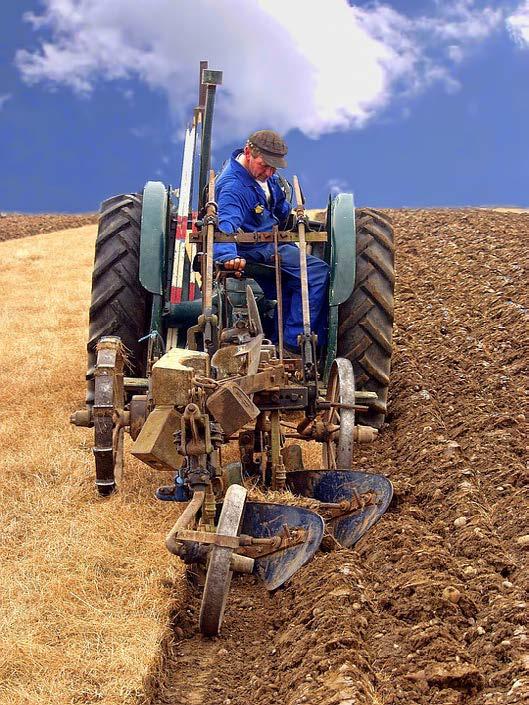
• the informed and sparing use of fertilisers, herbicides and insecti cides;
• the restoration of important car bon sinks like peatlands, wetlands and grasslands.
Call to action
Ken believes it would be easier to put carbon back into the soil instead of reducing in CO2 emissions caused by using fossil fuels. “In the short term, it will probably be more easily achiev able to put carbon back into the earth’s soils than to try to convert all the worlds’ fossil-fuelled vehicles into solar or hydrogen-powered machines.
“We need to actively work at restor ing soil carbon while the transformation to safer power sources for transport
is being considered, investigated, and implemented. It will still be a long time before we see the end of fossil fuels.
“We simply cannot allow the resto ration of soil carbon to be left behind while we search for ways to deal effec tively with the fossil fuel crisis; it has become clear that we now depend on maximum effective carbon sequestra tion for our ultimate survival.”

Any plant that is not wanted or that sprouts up at the wrong time or in the wrong place is considered a weed.
There are a number of drawbacks associated with weeds:
• Weeds consume water, nutrients, and sunlight that could otherwise be used by crops.
• Seed contamination is just one way in which weeds can reduce crop quality.
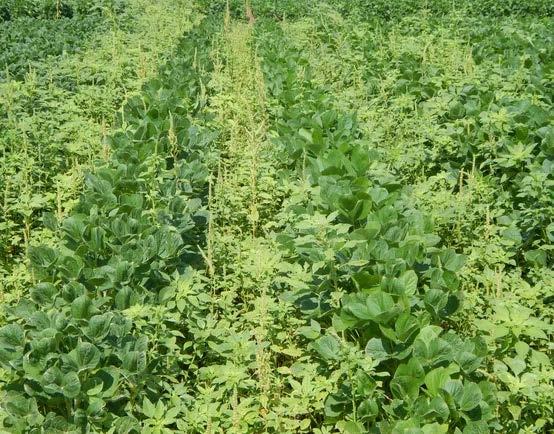
• Several weeds are known to be
extremely dangerous.
• Insect pests and diseases can find a new home in weeds.
• It can be pricey to implement weed-control measures.
Weeds have the following positive effects:
• Shelter for beneficial insects and animals can be found in weeds.
• Some weeds can be used as food.
Due to the complexity and high cost of chemical weed control, it was decided that it would not be covered in this guide. Before using chemicals to get rid of weeds, it is best to talk to an expert.
Ploughing (primary tillage)
There is a chance that ploughing will kill weeds by burying them or by exposing the weeds' underground portions to dry. On the other hand, ploughing could expose dormant weed seeds to light, which would make it easier for them to grow.
A harrow or cultivator is used in order to eliminate any potential regrowth after ploughing. Tillage should not go deeper than 10 to 15 cm.
As a general rule, it is best to start weeding as soon as possible so that your crops do not have to compete with unwanted vegetation. Maize, cotton, groundnuts, beans, and sweet potatoes all benefit greatly from a weed-free environment early in their development.
For the most part, weeds are eliminated in the course of the season by either having them pulled out or being cut with a hoe. Weeds are uprooted and then left on the soil to act as a mulch and increase the soil's organic matter content. It is not uncommon to thin the crop and fill in the gaps at the same time as weeding. Although the cost of the tools used in hand hoeing
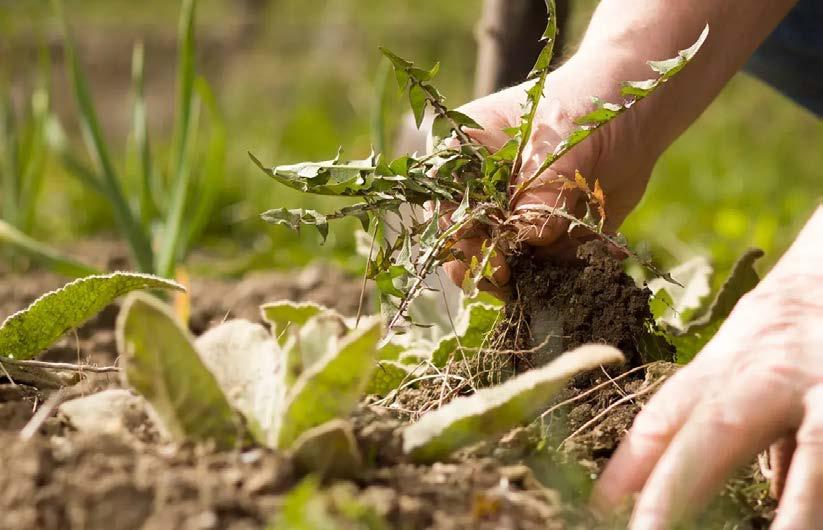
is low, the amount of work required is high. Most of the time, a farmer's ability to farm a certain piece of land is limited by the need to take care of weeds during the growing season.

Most people suggest using second ary tillage tools like harrows and culti vators to get rid of weeds mechanical ly. A tine harrow is ideal for this task. However, crops can be mechanically weeded only in a grid pattern, so that some weeds may be skipped.
If tractors are used, the price of implements can skyrocket. Cheap cul
tivators pulled by donkeys or oxen are easy to find in Namibia. When used with row planting, these cultivators are an effective way for small farmers to get rid of weeds at a price they can afford. This means that more land can be used for farming.
Animal-drawn cultivators require furrows to be 80 to 90 cm wide. In order to create narrower furrows, you will need well-trained animals and skilled operators. On-farm trials indicate that using a cultivator drawn by a donkey can significantly outpace hoeing for weeding. When using a cul
tivator drawn by an ox, weeding can be accomplished twenty times quicker than when using a hoe. Hand hoe weeding is still necessary to get rid of weeds in the gaps between crop rows.
Every corner of the globe, includ ing Namibia, is used to cultivate an enormous variety of crops. Plants like the prickly pear are included, as well as vegetables and herbs, citrus, olives, grapes, subtropical fruit, cereal grains, and fodder plants like lucerne and old man salt bush.
It would be impossible to write a
book that covers every conceivable type of crop and every possible vari ety of cultivars. However, it should be noted that for most crops, a number of cultivars are commercially available and that the selection of a specific cul tivar can "make or break" the success of the business.
A farmer needs to accept the fact that there is no magic bullet cultivar that can withstand all possible cli mate, soil, water, disease, and pest threats. Therefore, one should choose the best option from the available range, or perhaps even try a few dif ferent cultivars, and then identify the best-producing ones over a number of seasons. Consider the following factor before purchasing seed:
The purpose for which the crop is planted. For instance, home con sumption would require a long-season cultivar, but when selling the produce, it could be more desirable to have enough available at the earliest pos sible markets.
The information in this article is credited to the Namibia Agricultural Union and Namibia National Farmers Union who published the Crop Production Manual in 2008.


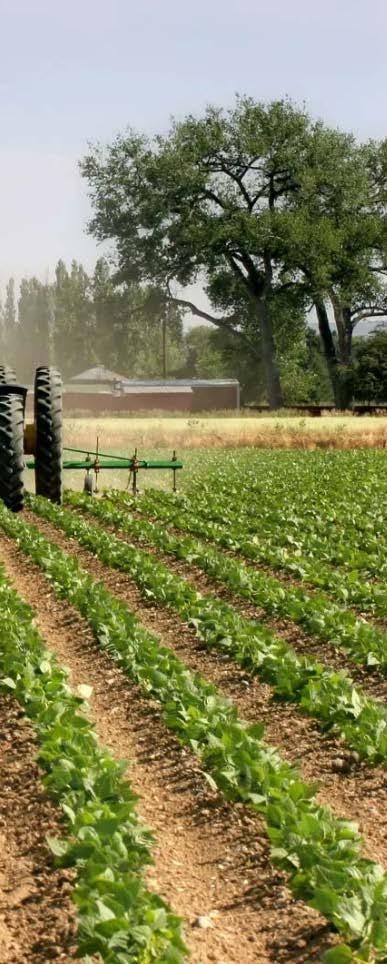



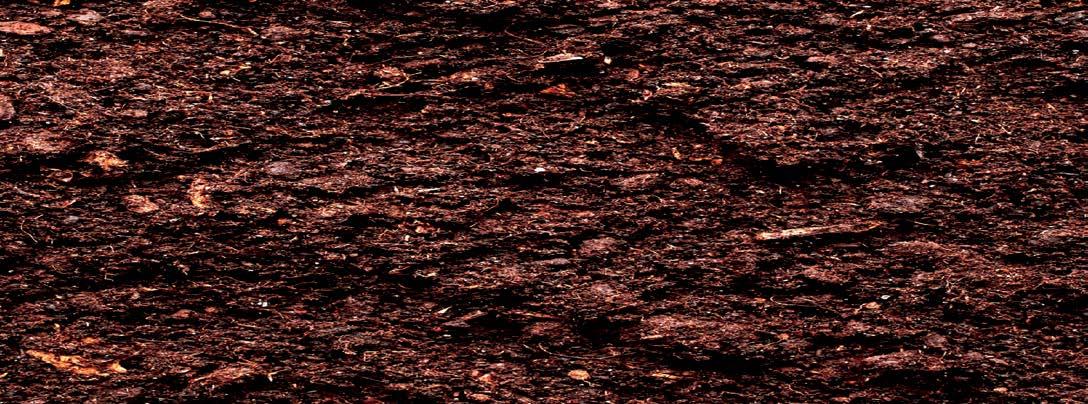





A crucial element of the piggery busi ness chain is the market. Thorough ly compiled market information and linkages determine piggery production objectives and profitability due to the corresponding buyer and customer’s requisites which can aid them to access domestic, regional and global markets.
According to the Food and Agricultur al Organisation (FAO) document, The Role of Market Information, efficient market information can have positive benefits for farmers, traders and poli cymakers.
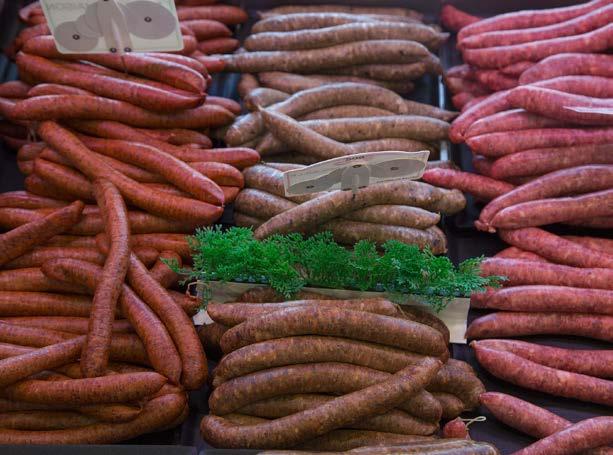
Up-to-date, or current, market infor mation enables farmers to negotiate with traders from a position of greater strength. It also facilitates spatial dis tribution of products from rural areas to urban areas and between urban markets by sending clear price signals from urban consumers to rural produc ers regarding quantities and varieties required.
Securing of markets usually involves vetting of supplier and buyer business and farm documentation, and contract agreements covering factors such as price, supply frequency, product pack aging, storage facilities, and logistics, which are important in maintaining product quality.
Optimum market accessibility for piggeries is also shaped by various macro and micro-economic elements.
Micro-economic elements influencing markets include customers, availability of employees, distribution channels and suppliers, availability of investors
and media, and the general public.
Regarding customers, producers have to ensure that their marketing campaigns attract the right customer base, for example product photogra phy ideas have to align with custom ers’ desires. Other important factors related to customers are stability of demand, prospects of sales growth, relative profitability, and intensity of competition.
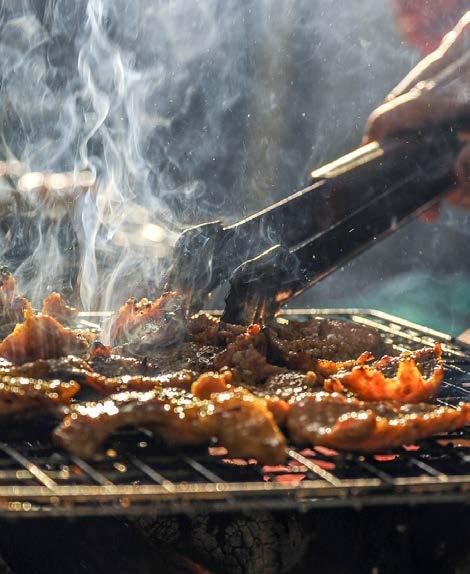
On the supplier side, producers have to be cognizant of their role in the value delivery process, ascertain that the piggery business has the necessary resources to market demands, and be aware of the qualitative and quantita tive determinants influencing price changes.
In the case of producers selling products via a third-party reseller, or middlemen such as wholesalers and re tailers, then the success of the market ing will be highly dependent on them. If let’s say, a certain retail seller has a strong reputation, it will pass on to the farm product.
In the case of competitors, farms have to ensure that sales and market ing strategies understand competitor operations, as their product and its price affects the farmer and can be used to gain an edge over them.
Depending on the market target, shareholders and investors may help fund the piggery to meet market vol ume demands, and it is important to
note that inasmuch as including inves tors can help share risks of operating and often gain support and expertise, some control of the venture may have to be relinquished.
Media and the general public can affect the ongoing business image. Communities often support compa nies that provide jobs, pay taxes and operate with social and environmental responsibility.
Macro-economic elements affecting piggery markets are inflation, employ ment, consumer spending and a coun try’s monetary and fiscal policy.
According to Investopedia, inflation is a key factor watched by economists, investors, and consumers. It affects the purchasing power of a country’s currency. The higher the inflation the less the purchasing power of the cur rency. This purchasing power always affects all economic sectors.
Federal reserve banks or central banks seek to regulate employment levels through monetary policy stimu lus and credit measures. These policies can ease borrowing rates for piggery businesses to help improve capital spending and business growth, result ing in employment growth.

Slow growth or decline in consumer spending suggests a decline in aggre gate demand, which affects business performance.
Monetary policy measures are typically based on interest rates and



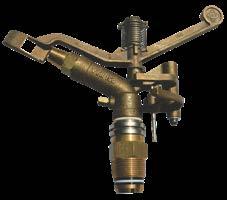

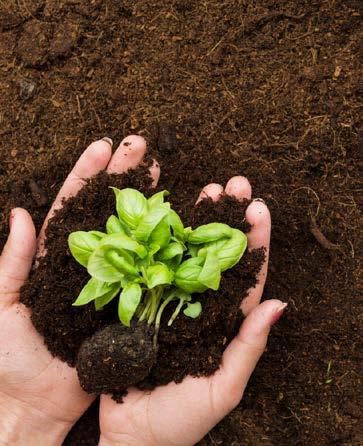





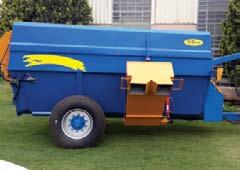
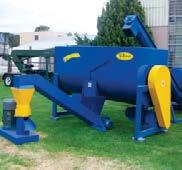

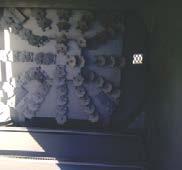
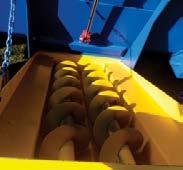
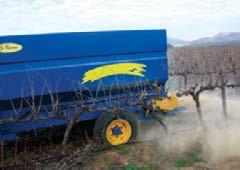

access to credit. The tightening of monetary policy indicates rates are rising, making borrowing more costly and less affordable, and vice versa Loosening of monetary policies is always favourable for agricultural businesses.
In sub-Saharan countries dependent on agriculture, a government’s strate gies when it comes to fiscal policies have to be favourable. Low tax rates increase individual and business incen tives to work, invest, and save.

Poor piggery market information and linkages can result in a lack of connec tion with customers, growth oppor tunity loss, higher risk vulnerability, poor business decisions, and ultimately loss of customers to competitors, all of which can be avoided by being vigor ous in compiling the information. Good research and linkages can aid in creased sales, improved brand recogni tion, and can also be used to measure brand reputation.
Isabelle Tsakok in her article, The Pivotal Importance of Good Access to Markets for Farmers, states that if
Butcheries sell cut pork meat. (Source: pixabay by lessaek1)

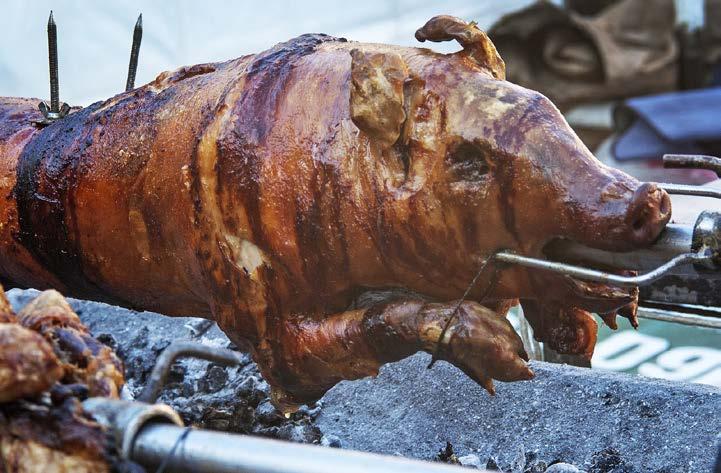
governments want to transform their agriculture, they must provide an environment that enables their farmers to be productive and to sell profitably. Governments that have succeeded in providing such an environment over decades have used a variety of ways, acting along the entire value chain from production, through process ing, marketing (domestic and foreign), and on to final consumer demand. The success of this process also relies on support and proactive participation of the piggery private sector as well.




According to the McKinsey and Company report, Winning in Africa’s agricultural market, more than 60% of the popula tion of sub-Saharan Africa are smallholder farmers, and about 23% of sub-Saharan Africa’s GDP comes from agriculture.
These farmers participate in a variety of agricultural systems, from horticulture to livestock production.
When it comes to tree nuts, the majority of these farmers face a myriad of challenges such as the high costs involved in setting up plantations, main tenance, and the long waiting period between planting and harvesting. Tree nut produc tion systems are more com mon among farmers with large amounts of capital to inject into production.
Nuts generally have a high oil content and are a signifi cant energy source. Most of the harvested nuts are utilised for culinary, cosmetic and medici nal purposes. They can also be ground to make nut butters or pressed to produce oil. In the culinary sector, they are used in baked goods, candy, ice cream, frozen desserts, puddings, and hot chocolate, cereals, trail mix, soups, and grain breads.
In the cosmetic sector, their essential fats and protein con tent are desirable because it promotes smooth, supple and glowing skin, and improves hair. Their richness in antioxidants, vitamins and other components make them sought for in the pharmaceutical industry.
The tree nuts produced
by Tapuwa MashangwaAlmond tree nuts grow well in climates with slightly hot summers with tem peratures ranging from 30 to 35 oC, and cool winters that promote plant growth and kernel filling. Their un opened blossoms can resist tempera tures as low as -2,2oC, but blossoms at petal fall stage are damaged at 0,5 oC to -1,1 oC. Nut tree plantation densities are 270 trees per hectare depending on the varieties grown. This gives an average yield of 2,04 tonnes per hectare. Planting to harvesting takes 2 to 4 years. They are grown in Libya, Morocco, Algeria, Côte d’Ivoire, Burkina Faso, Benin, and South Africa.
Chestnuts are usually roasted. (Source: Mikhail Nilov via pexels)

globally are almonds, cashew, chestnut, hazelnuts, pecan nuts, pistachios, walnuts, macadami as, pine nuts and Brazil nuts.
Outside Africa, tree nut pro ducing countries are the United States of America, United Arab Emirates, Australia, Spain, Saudi Arabia, Iran, Tunisia, Iran, Bolivia, Peru, India, Vietnam, Cambodia, Indonesia, Italy, Azerbaijan, Chile, Korea DPR, Pakistan, Greece, Syria, France and Argentina.
In Africa producers are South Africa, Malawi, Nigeria, Senegal, Kenya, Tunisia, Egypt, Libya, Mo rocco, Algeria, Côte d’Ivoire, Bur kina Faso, Benin and Zimbabwe.

According to a 2022 Statista report during the 2020/2021 period, over 5,3 million met ric tonnes of tree nuts were produced worldwide. Within the tree nut category, the almond production volume (kernel basis) was by far the highest in the 2020/2021 period: over 1,6 million tonnes of almonds were produced that year. Walnuts and cashews, which stood in second and third place respec tively within the same measured period, each reached over one million tonnes.
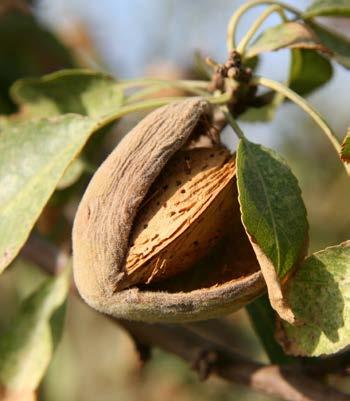
Global production figures for the 2021/2022 period are: al monds, 1 643 thousand tonnes; walnuts, 996,08 thousand tonnes; pistachios, 795,3 thou sand tonnes; cashews, 894,29 thousand tonnes; hazelnuts, 545,15 thousand tonnes; pe cans, 129,51 thousand tonnes; macadamias, 66,44 thousand tonnes; pine nuts, 40,01 and Brazil nuts 24 thousand tonnes.
Almonds are used in candies, baked goods, and confections, as well as for the oil processed from the nut. The fruits from almond trees are also reputed to relieve a number of physical ailments as they control blood sugar, assist with blood pressure levels and lower cholesterol levels.
Raw, harvested almonds. (Source: Pixabay)
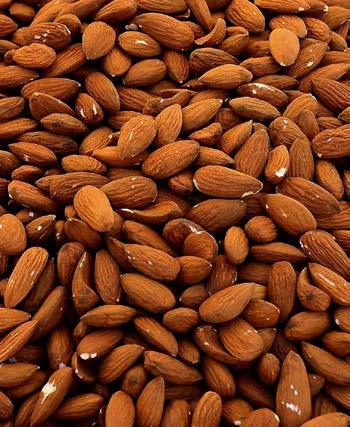
want to make decisions
improve your yield and bottom
Irrigation is here to provide you with the equipment and technology you need to achieve maximum
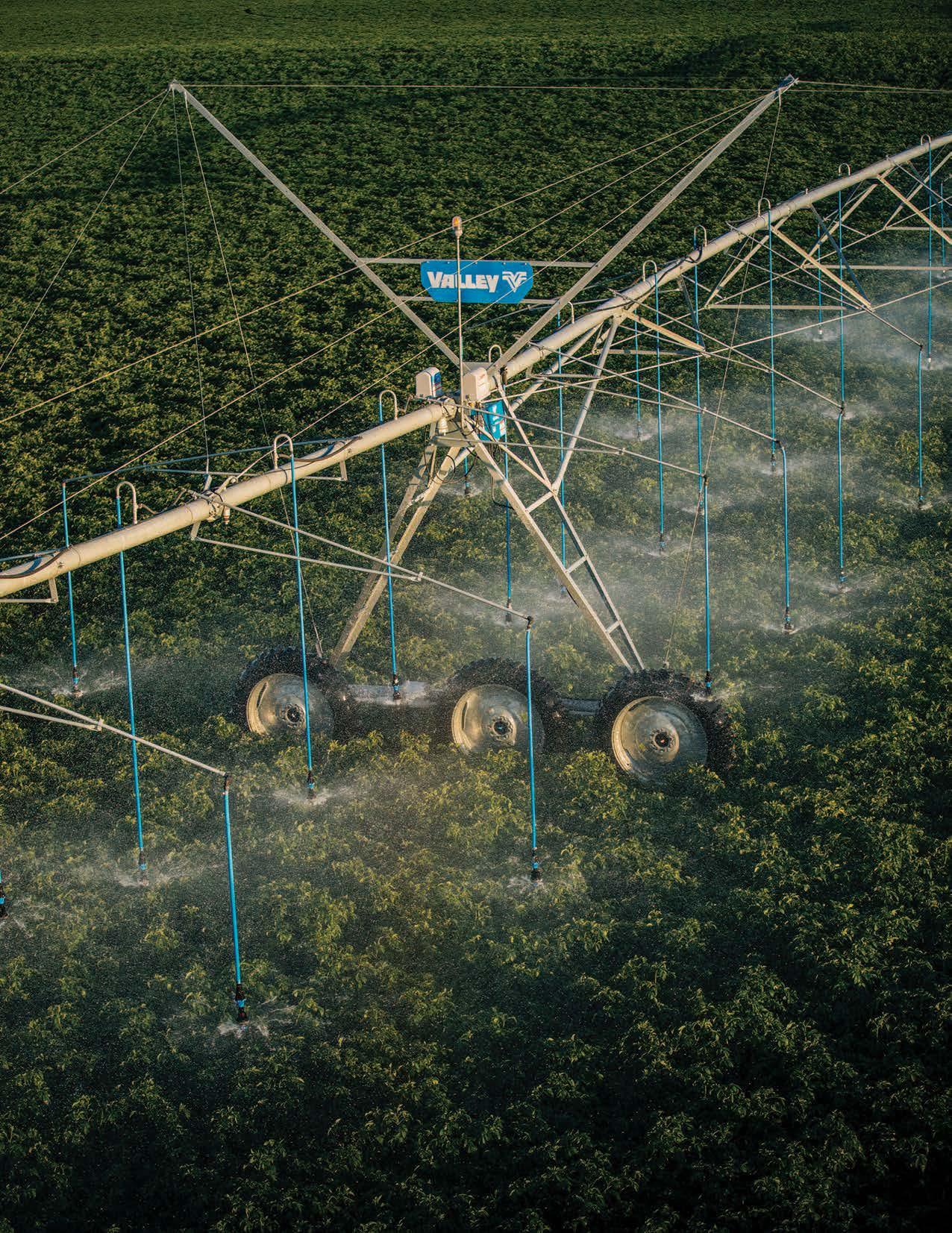
profitability. No matter your field size
budget, we have the best irrigation solution for
you’re installing irrigation equipment for the first time, replacing an aging pivot or upgrading your current equipment,

no question that it’s a big investment
a significant
exactly what you need is crucial to the way you farm.
us to help you design a
solution
Cashew trees do well in a warm, humid climate characterised by a minimum of 600 mm of rainfall. They require temperatures from 15 to 40 OC. Trees do not perform well in regions that experience frost and cold waves. They are drought resistant. The plantation density for cashews is 100 trees per hectare producing 0,25 tonnes of nuts per hectare, in contrast to over a tonne per hectare for the dwarf variety. They are mostly produced in Côte d'Ivoire. Other main producers are Tanzania, Nigeria, Benin, Guinea-Bissau, South Africa, Mozambique and Ghana.
The cashew apple – as the fruit is called – can be juiced and turned into wine, and the wine distilled for brandy. The sap from their trunks has insecticidal properties. The poisonous cashew nutshell liquid is used to make a variety of products such as epoxies, ship varnishes and friction dust for car brake linings, to mention only a few.

Chestnuts produce best in areas that have hot, humid summers. There is great genetic variation in climatic toler ance, especially cold hardiness. Trees chosen should be fit for the area in which they are intended to be grown.
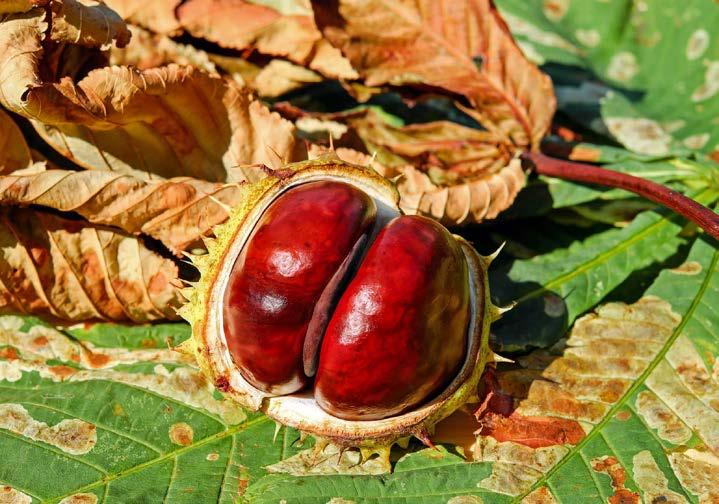
Tree plantation average 60 trees per hectare to produce about 6,7 tonnes per hectare. It takes two to three years from planting to harvest time. In sub-Saharan Africa they are produced in Zimbabwe and Cameroon.

They are used in the culinary indus try, and their medicinal properties aid in heart health, improve blood sugar con trol, aid in weight loss, lower inflamma tion and possess anti-tumour properties.
The potential for the increased produc tion of more nuts in sub-Saharan Africa remains plausible. Variety and species from more investment in research and development would aid this process, to gether with training and assistance from the private and public sector.
